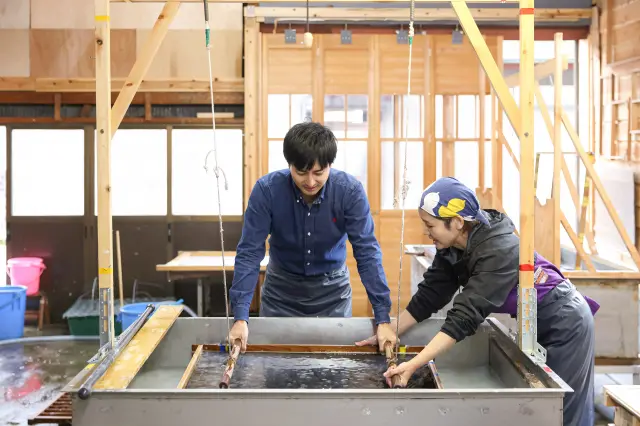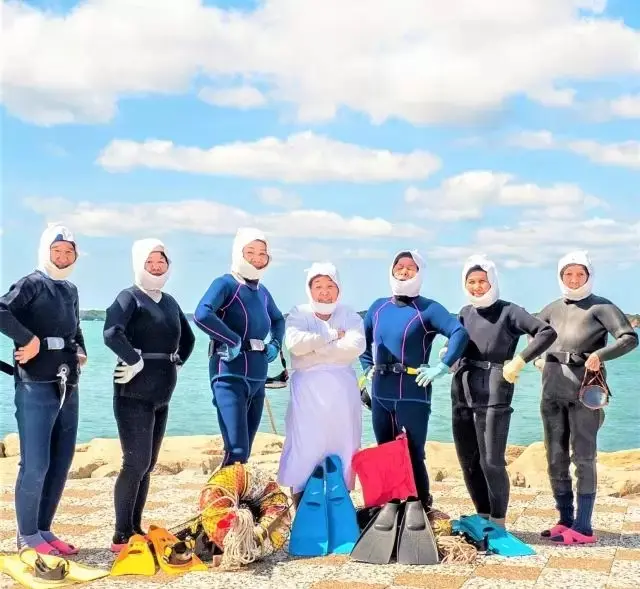
Mie: A Journey to Experience the "Ama Culture" Living Along the Beautiful Ise-Shima Sea
Last update
For centuries, women have practiced free diving in Mie Prefecture, harvesting shellfish and seaweed directly from the ocean. These skilled female divers are known as Ama, and their tradition of breath-hold diving dates back over 2,000 years. Recognized as both a National Important Intangible Folk Cultural Asset and a Japan Heritage, the Ama culture remains an enduring symbol of Japan's coastal traditions.
This journey takes us on a thematic exploration of Ama culture, focusing on Toba City's Osatsu Town, famously known as an "Ama town". Here, we meet active Ama divers, admire the stunning Ise-Shima coastline, and even try our hand at pearl accessory-making in Goza.
Join us as we embark on a journey to discover the rich traditions of Ama culture and the breathtaking beauty of Ise-Shima's sea.
Table of Contents
DAY1
10:00am – Depart from Osaka Station
On the first day of our journey, we depart from Osaka Station and walk to Umeda Station on the Osaka Metro. Boarding the Midosuji Line bound for Nakamozu, we ride the train to Namba Station, where we disembark to continue our journey.
10:40am – Board the Sightseeing Limited Express "Shimakaze" – A Journey in Itself!
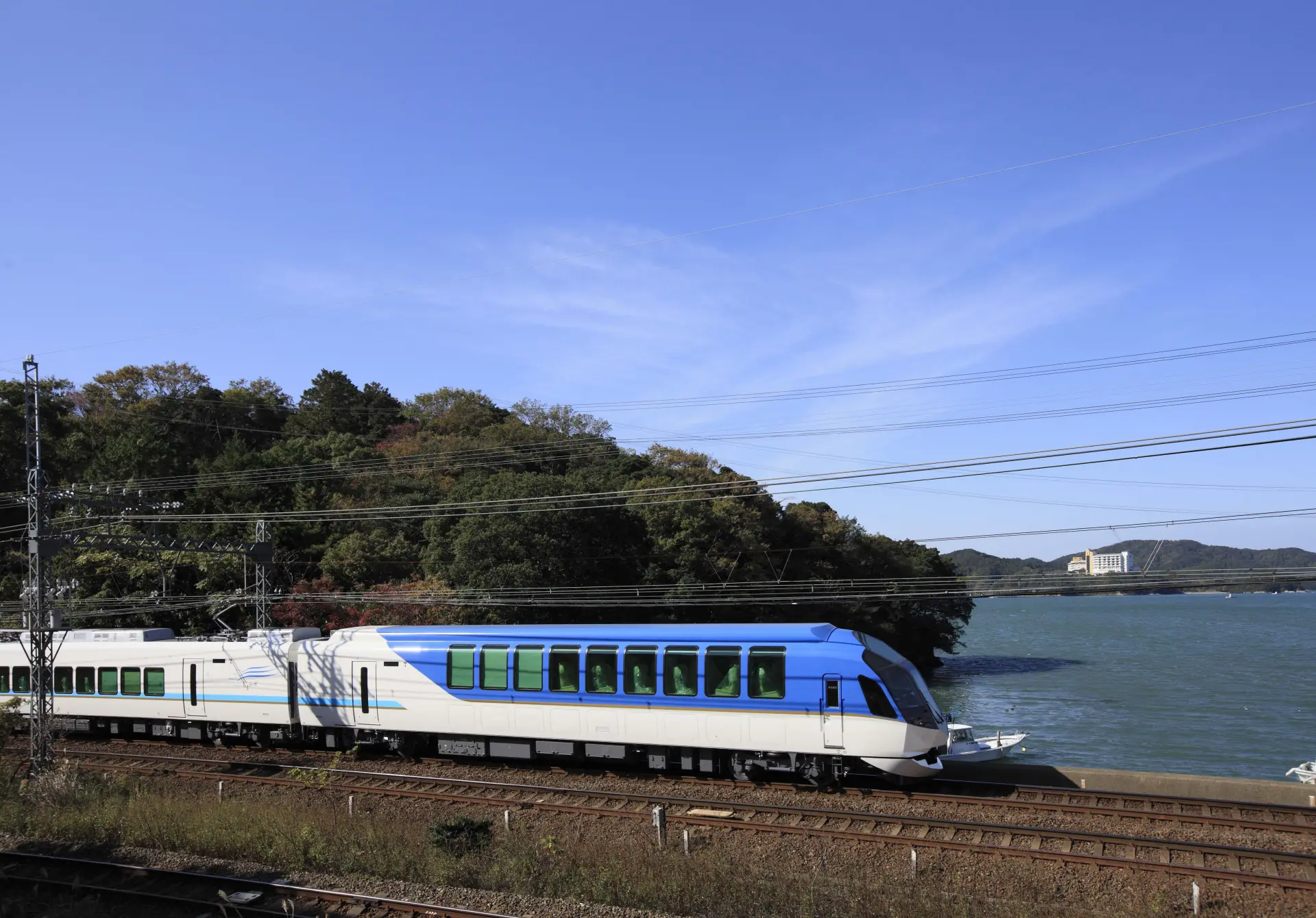
The train’s exterior design, inspired by a refreshing breeze, is truly stunning.
After arriving at Osaka Metro Namba Station, we take a 5-minute walk to the Kintetsu train platform. From Osaka-Namba Station, we board the sightseeing limited express "Shimakaze", embarking on a 110-minute train journey to Toba Station.
The "Shimakaze" sightseeing express is a luxury train operated by Kintetsu, connecting Osaka, Kyoto, and Nagoya to Ise-Shima. More than just a means of transportation, riding Shimakaze itself is one of the highlights of this trip. Every seat is designed with large windows, ensuring both comfort and spectacular views. As we leave the high-rise buildings of Osaka, the landscape transitions into peaceful countryside scenery, with expansive fields, rivers, and mountains reflecting the changing seasons.
One of the reasons for choosing Shimakaze is its variety of seating options. Private compartments allow for a relaxed and uninterrupted journey. In addition to its comfortable seats, the train offers a dedicated café car, featuring exclusive menu items and limited-edition onboard merchandise. We make our way to the café car, enjoying a freshly brewed coffee and cake while admiring the beautiful scenery along the route.
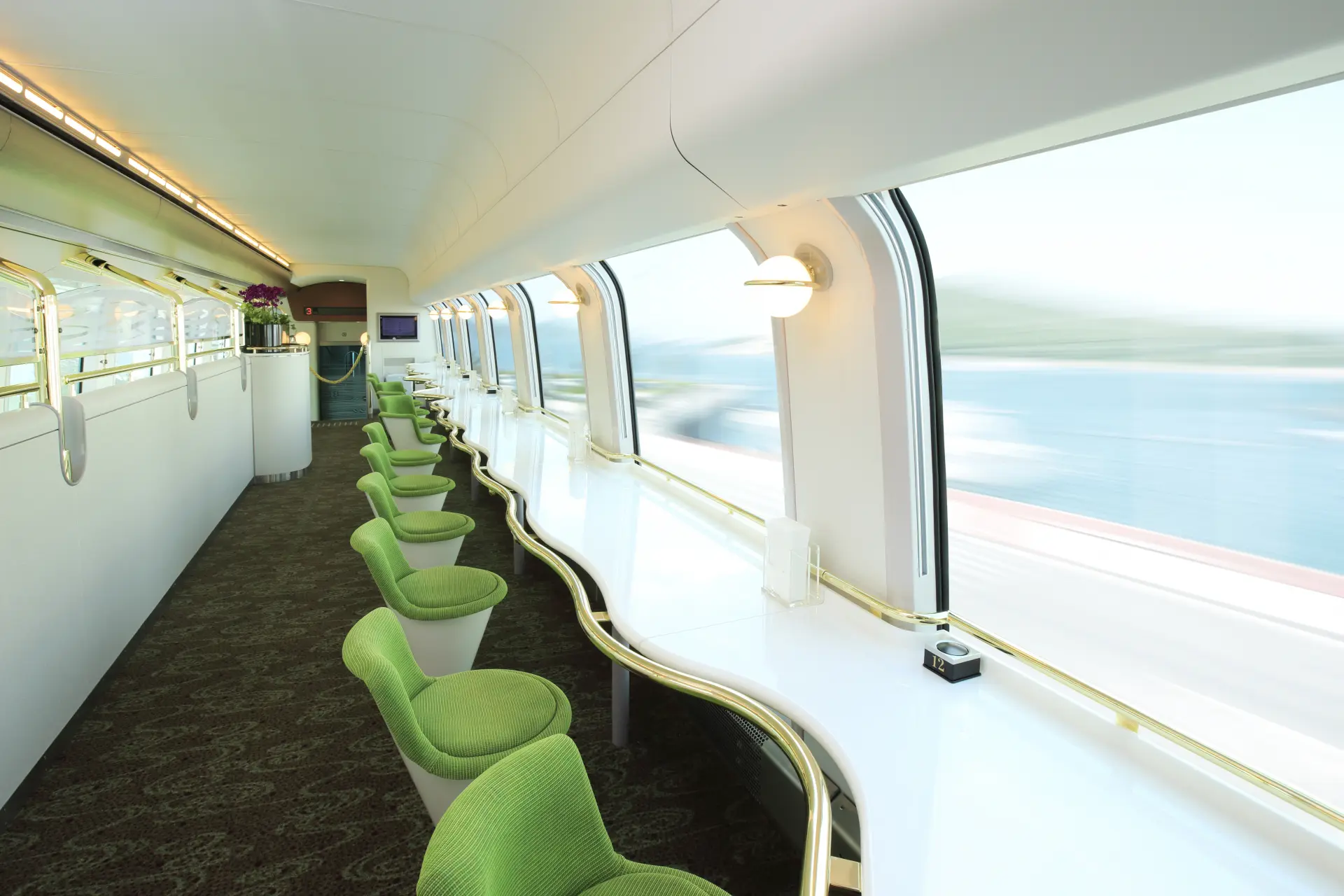
Car No. 3 is designated as the café car. The photo showcases the upper deck, offering an elevated view of the scenery.
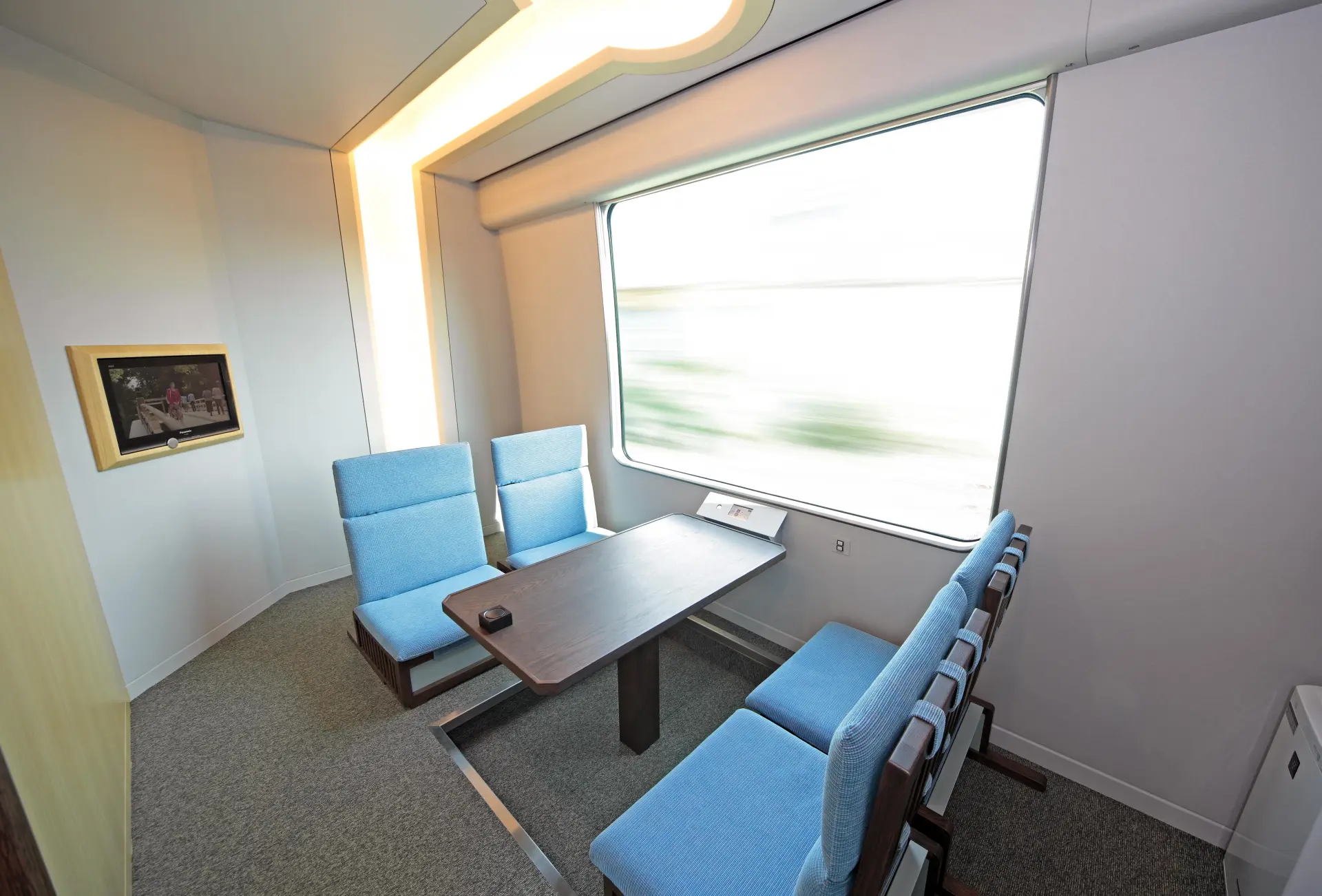
The train offers private compartments (pictured: Japanese-style private room for 3–4 people), which are perfect for groups. Additionally, salon-style seating is available for a more relaxed and social experience.
Basic Information
- Name in Japanese
- 観光特急「しまかぜ」
- URL
- URL
1:00pm – Lunch at "Ama Hut Hachiman Kamado," Listening to Stories from Active Ama Divers
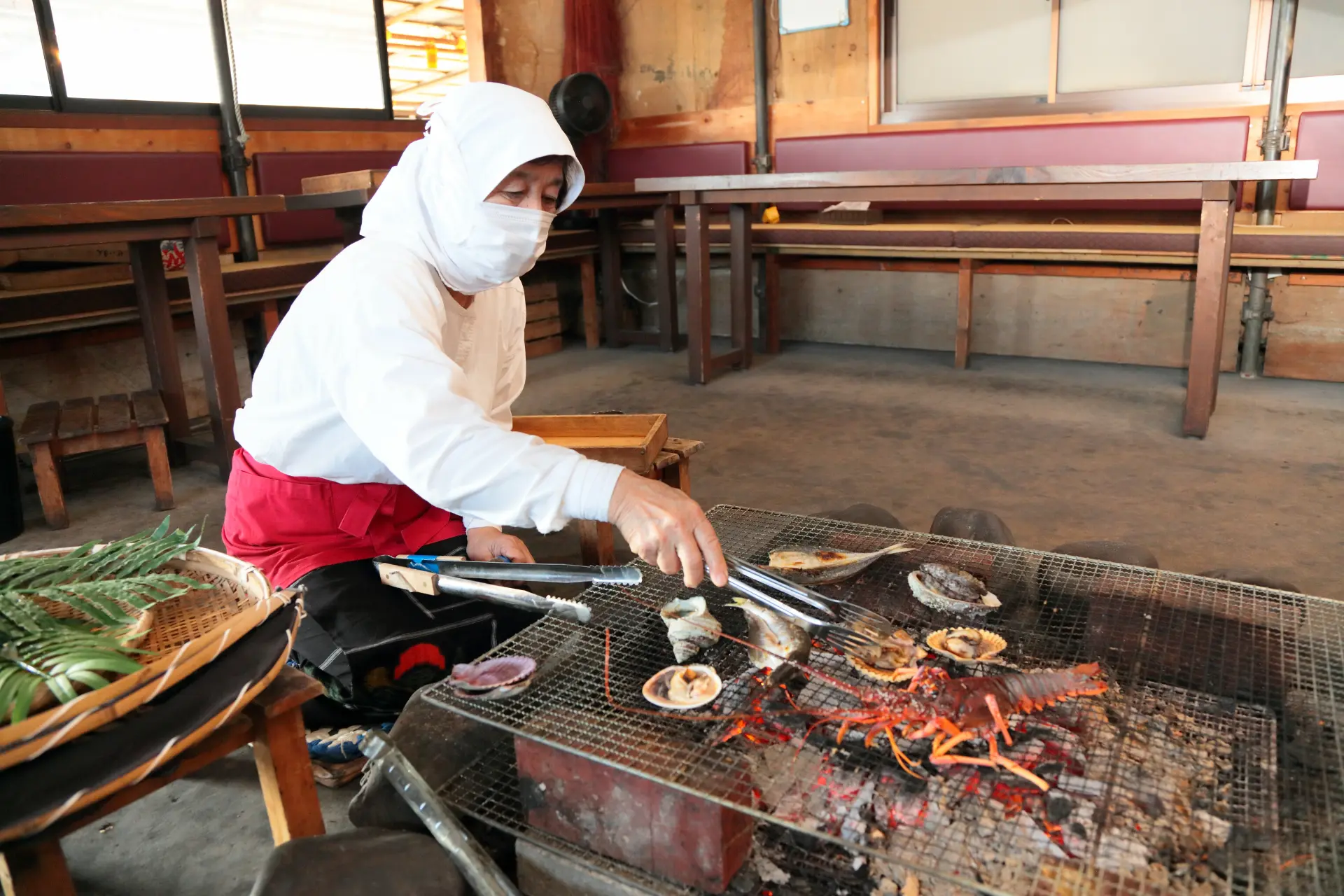
Fresh Ise lobster is placed on the grill and charcoal-grilled to perfection.
After arriving at Toba Station, we find a shuttle bus decorated with a cute illustration of an Ama diver waiting for us. The ride to our lunch spot, Ama Hut Hachiman Kamado, takes about 25 minutes.
Osatsu is known as the town with the highest number of Ama divers in Japan. Today, 70 to 80 Ama continue to dive, but at its peak, the town had over 200 active divers. The leader of Ama Hut Hachiman Kamado, Reiko Nomura, is an incredible 93 years old and continued diving until the age of 80.
Our dining space is modeled after a traditional Ama hut, where divers prepare for their dives and take breaks. At the center of the simple, unembellished room is a kamado (hearth) with burning charcoal. In real Ama huts, however, firewood is used instead of charcoal to warm the bodies of divers returning from the cold sea. The tables and chairs are arranged along the walls, creating a setting that feels far removed from a lively restaurant, instead exuding a quiet, solemn atmosphere.
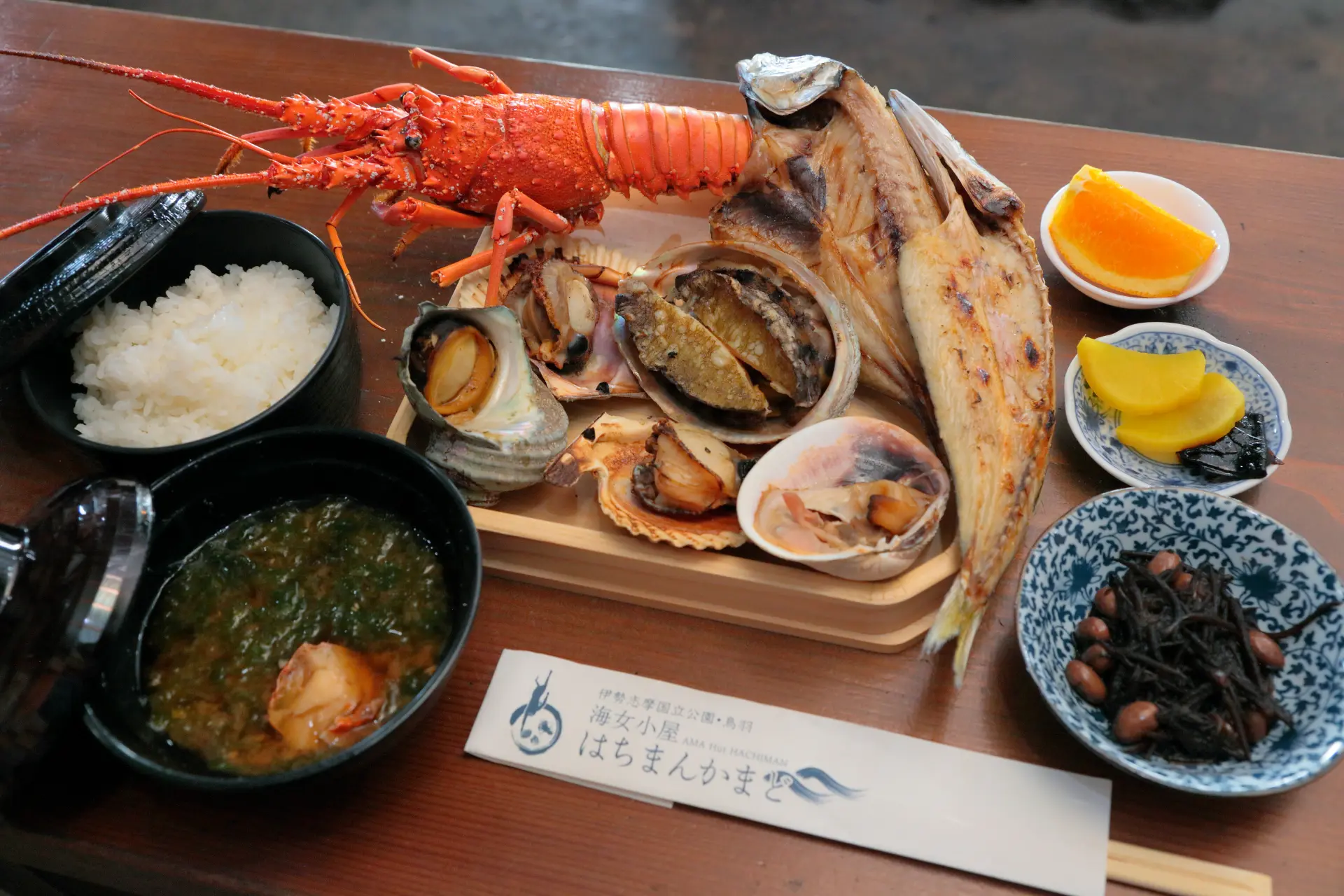
The "Marude Celeb Course" includes Ise lobster, abalone, turban shell, and more (pictured: 12,000yen).
The solemn atmosphere we initially felt quickly fades as the cheerful Ama divers strike up friendly conversations. Their warm, engaging personalities help us relax, making the experience even more enjoyable.
Just as we settle in, a basket filled with fresh seafood arrives. Each group is joined by an Ama diver, who explains the variety of dried fish and shellfish before placing them on the grill to be charcoal-grilled. The types of seafood included depend on the seasonal course menu. Ise lobster is available from November to April. Abalone is in season from May to September. Luckily, today's meal includes both Ise lobster and abalone!
As the seafood sizzles over the charcoal fire, the Ama divers continue sharing their fascinating stories. They usually go diving from 9:00am to 10:30am, and today, they have come straight here after their morning dive. Holding the actual tools they use, they explain how they dive and catch seafood, giving us a firsthand insight into their traditional fishing methods.
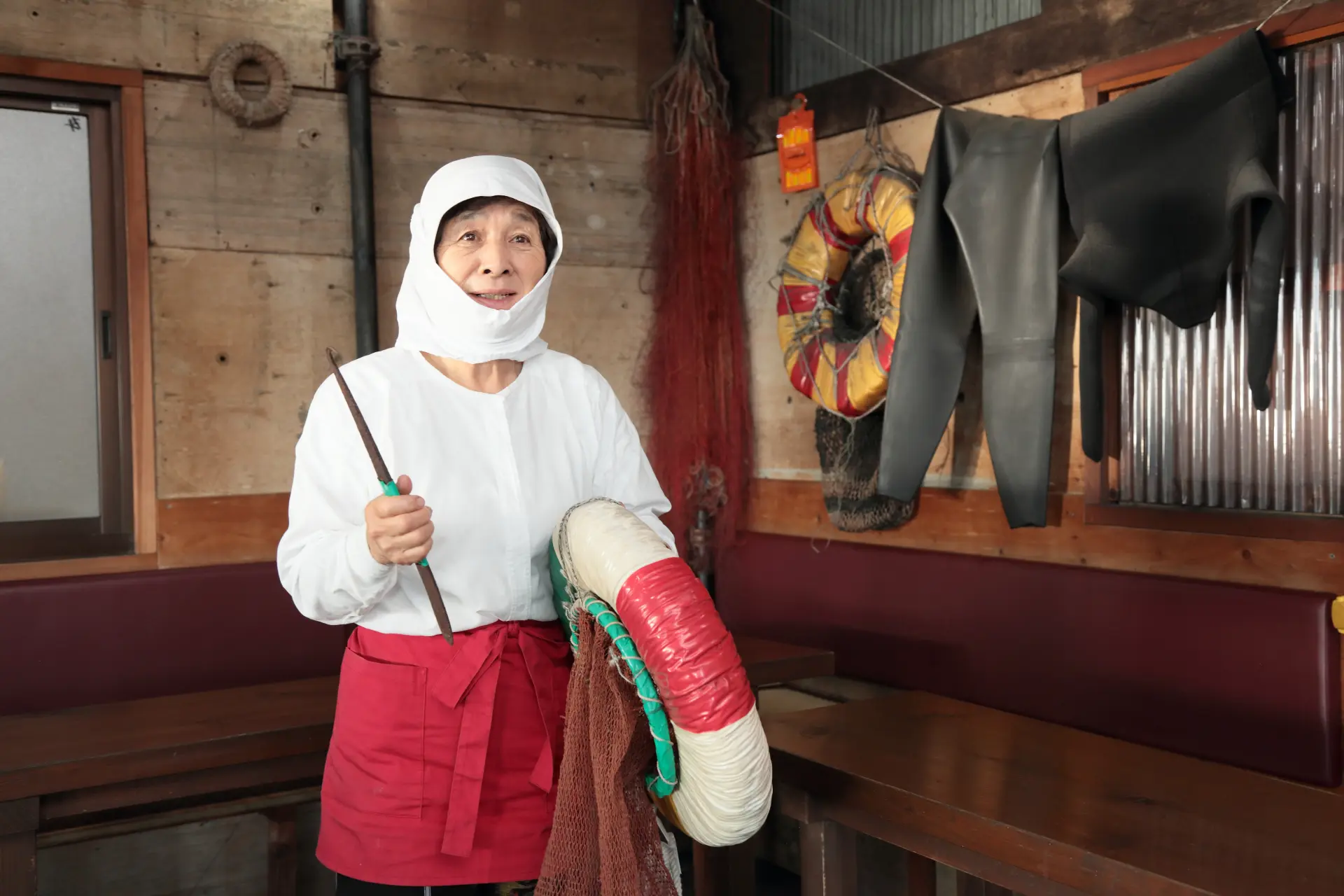
The photo shows the "Tanbo", a net basket attached to a floating ring, which is used to store collected seafood while diving. It also features the "Kaginomi", a hooked tool designed to pry shellfish from rocks or hook sea urchins. These are essential tools that Ama divers use in their daily work.
No special seasoning was added—just simple charcoal grilling, with no salt or soy sauce. Yet, the natural umami of the seafood was so intense that it was truly surprising. The rich flavors of the ocean alone were more than enough to make each bite deeply satisfying. The plump texture of the Ise lobster and abalone was simply irresistible.
After finishing the meal, several Ama divers joined in, and suddenly, music started playing. They performed the Osatsu Ondo, a traditional local dance. Gathering around the hearth, we joined in the dance, feeling as if we had become Ama divers ourselves, fully immersed in their vibrant culture.
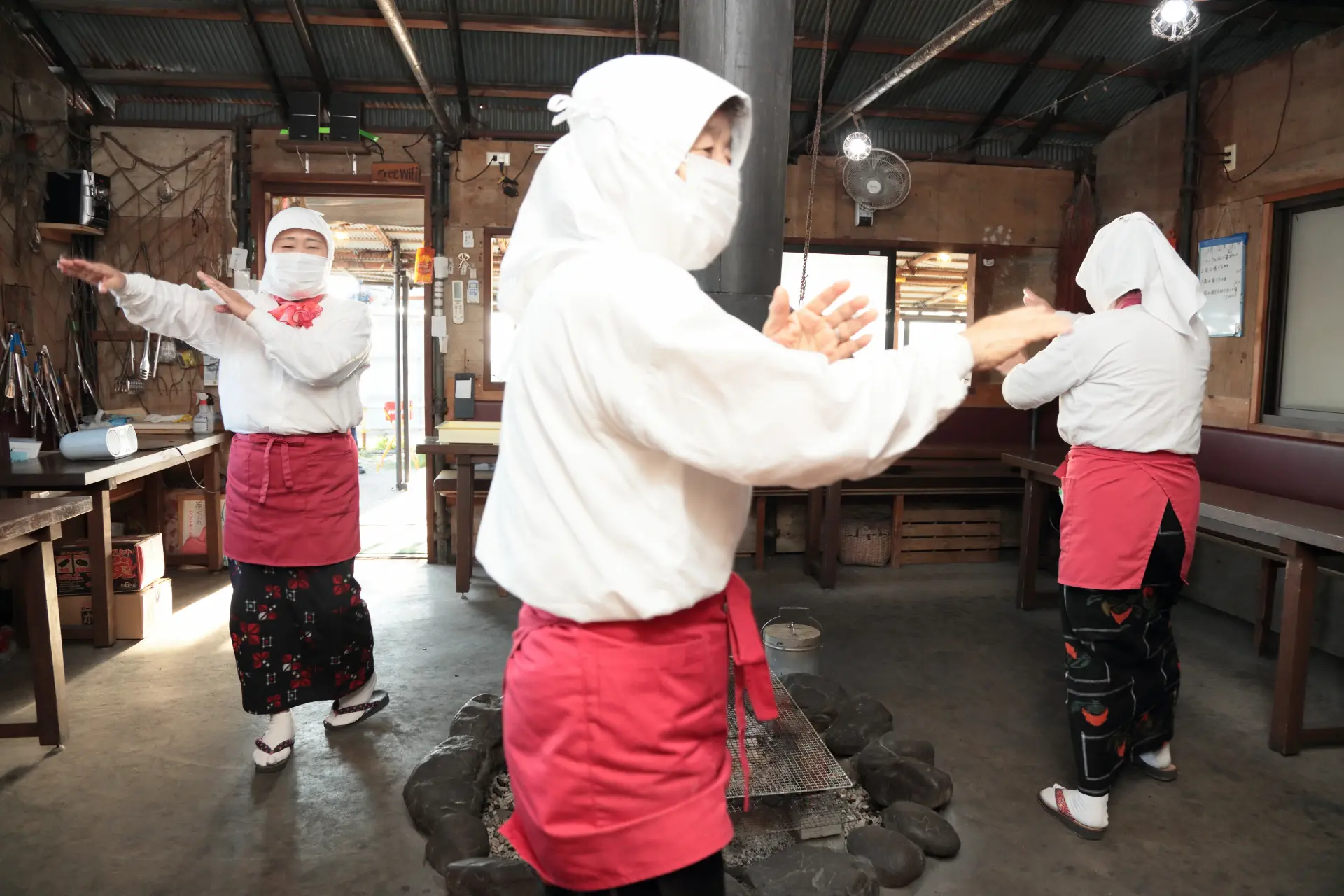
The Ama divers performed the Osatsu Ondo, a traditional dance passed down through generations. Guests are welcome to join in and dance together, making it a truly immersive cultural experience.
Basic Information
- Name in Japanese
- 海女小屋はちまんかまど
- URL
- URL
2:50pm – Learn About Ama Culture at the "Osatsu Ama Culture Museum"
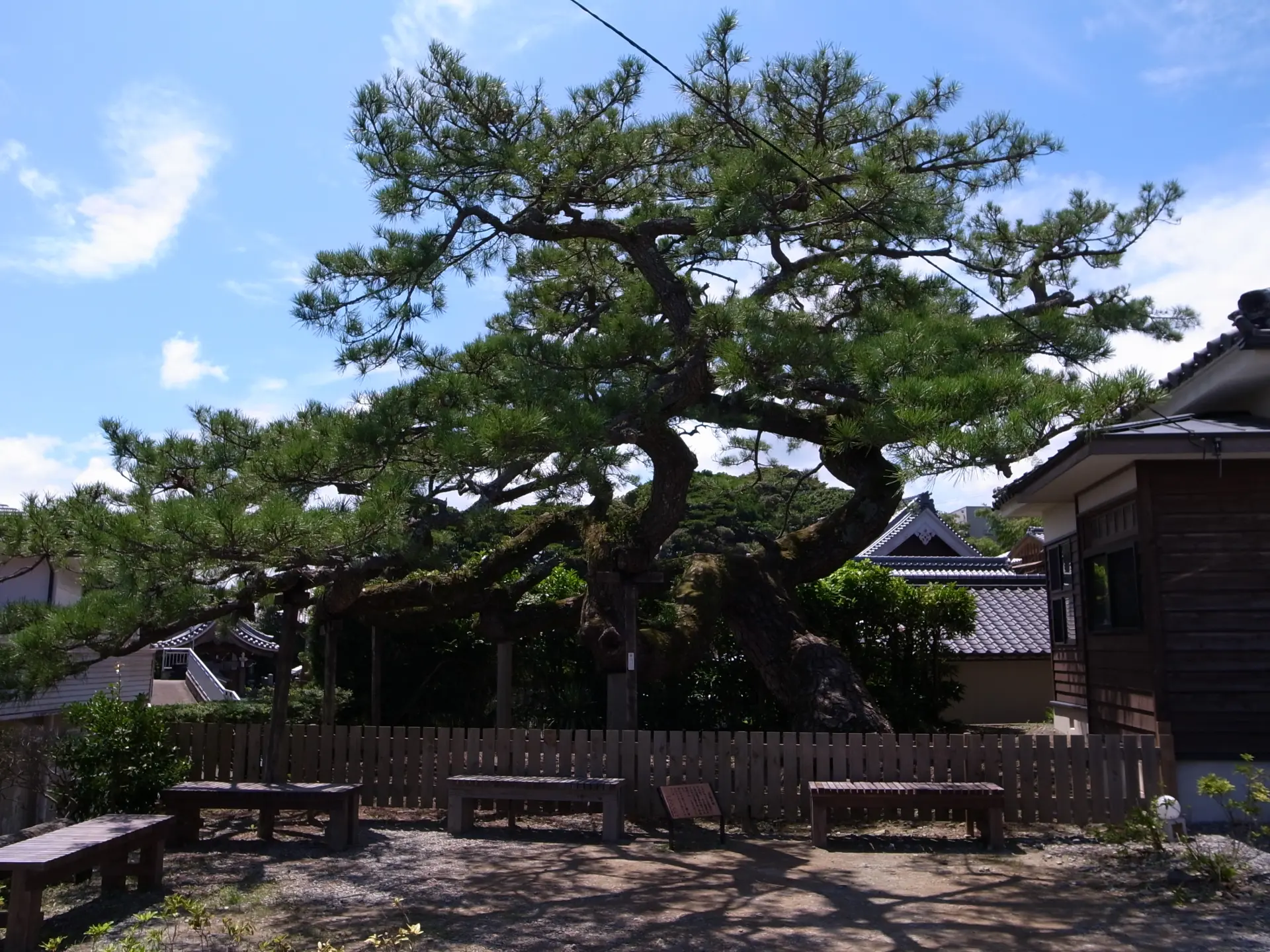
To the left of the building, there stands a black pine tree known as "Shōryū no Matsu" (Rising Dragon Pine). It is said that placing your hand on its branches while making a wish will bring your desires to fruition.
Leaving Ama Hut Hachiman Kamado, we take a leisurely 20-minute walk through the quaint fishing town, enjoying its charming coastal scenery before arriving at the Osatsu Ama Culture Museum.
Inside, various models and exhibits introduce the history and traditions of Ama divers. One of the first displays that catches our eye is a life-size diorama, depicting an Ama diver dressed in a traditional white Isogi (diving attire) as she dives into the sea. Although today’s Ama divers no longer wear Isogi, having switched to wetsuits, we can still see tools like the Isomegane (diving goggles) and Kaginomi (hook tool), which remain unchanged over time.
Another fascinating discovery is the protective charms of Ama divers, known as Seiman and Doman. The star-shaped Seiman and grid-patterned Doman are believed to provide safety and protection, and we’ve noticed these symbols throughout Osatsu Town. Now, having learned their significance, we find ourselves seeing them in a whole new light.
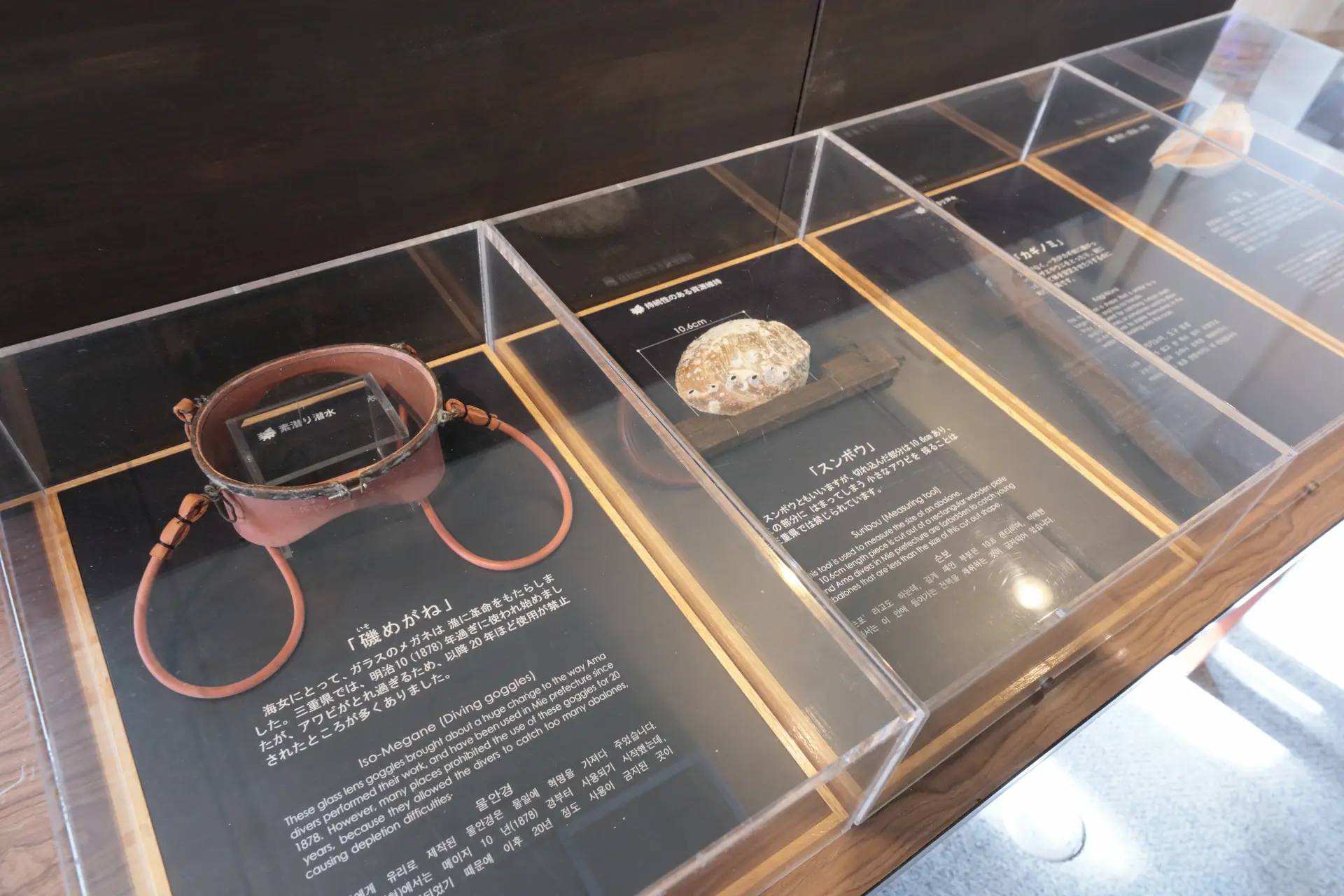
Visitors can see historical tools such as the Isomegane (diving goggles), which were first introduced during the Meiji period.
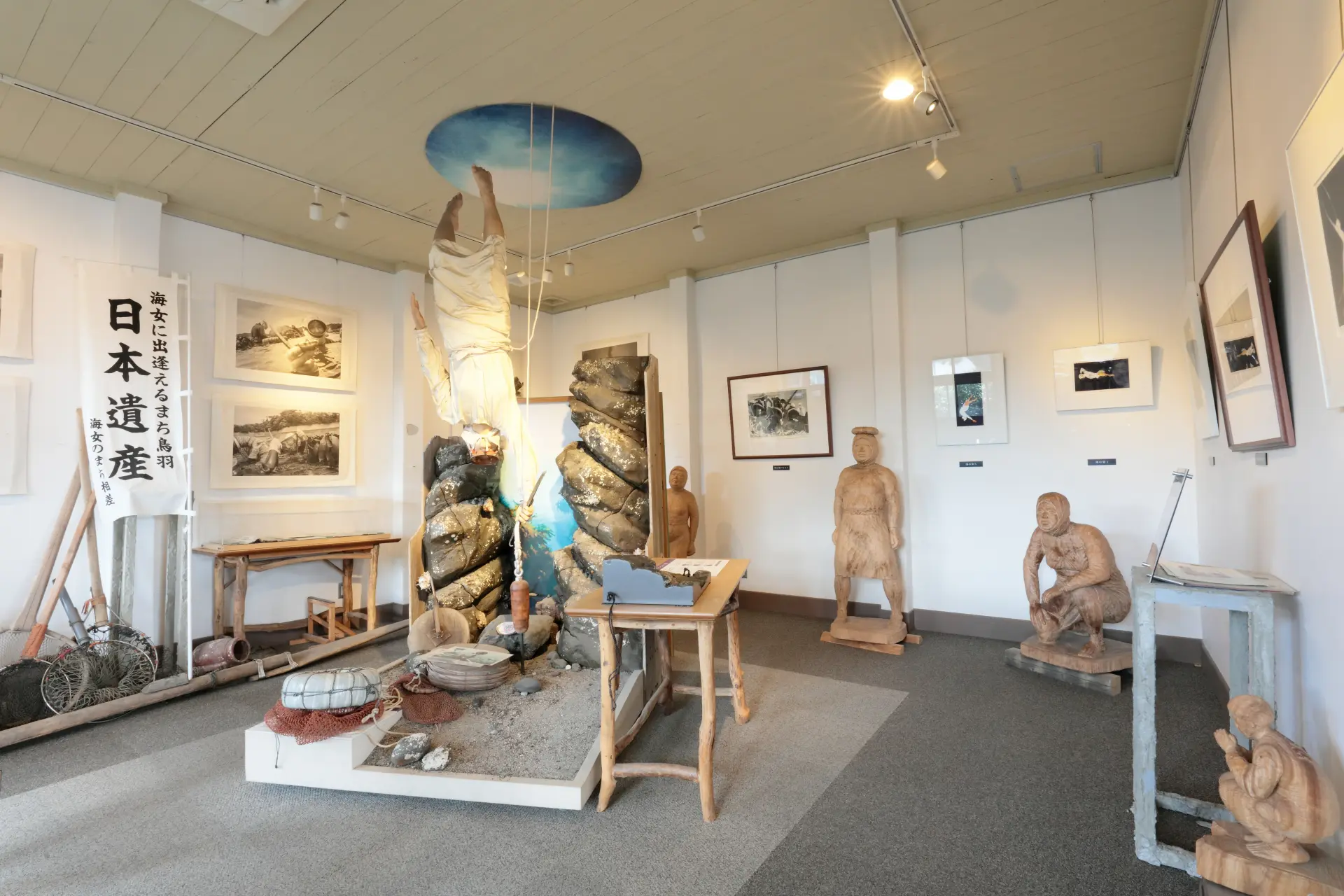
A life-size model showcases how Ama divers used to dive, giving insight into their traditional techniques.
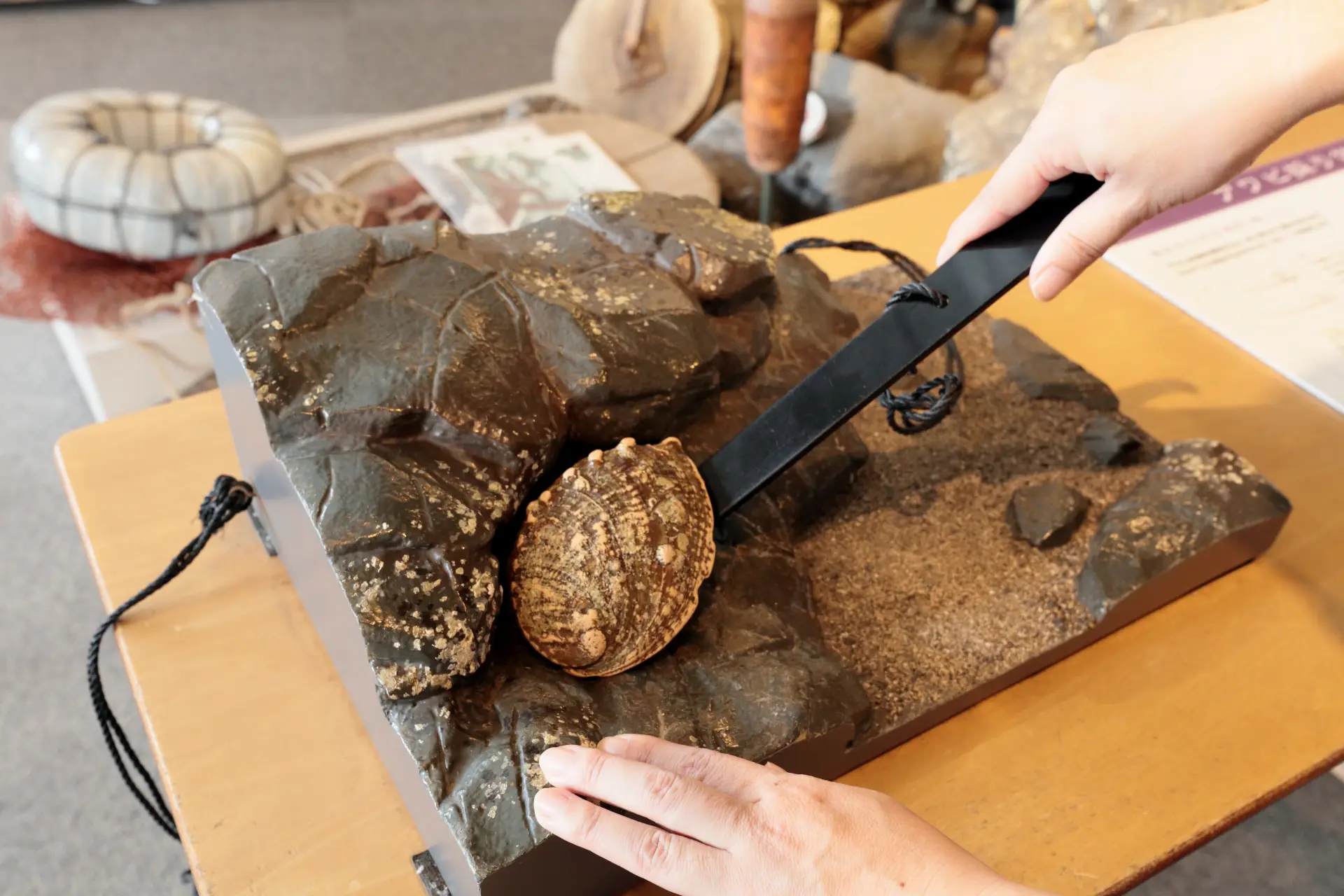
There is also an interactive exhibit where visitors can simulate prying abalone from rocks using a Kaginomi (hook tool), just as the Ama divers do.
The museum also serves as a tourism hub for Osatsu, offering free maps and travel brochures. It is a must-visit spot for anyone exploring the area.
Basic Information
- Name in Japanese
- 相差海女文化資料館
- Postal Code
- 517-0032
- Address
- 1238 Osatsucho, Toba City, Mie
- Telephone
- 0599-33-7453
- Access
-
By car, it takes approximately 25 minutes from Kintetsu/JR Toba Station.
By bus, take the Kamome Bus Kunizaki Line from Kintetsu/JR Toba Station for about 40 minutes, get off at the "Osatsu (Ishigami-san Mae)" bus stop, and walk for about 5 minutes. - Business Hours
- 9:00am - 5:00pm (May close around 12:00pm–1:00pm for a break)
- Admission
- Free
- Closed
- Open daily (may close temporarily for maintenance or special circumstances).
- URL
- URL
3:50pm – Visit "Ishigami-san" (Shinmei Shrine), Revered by Ama Divers
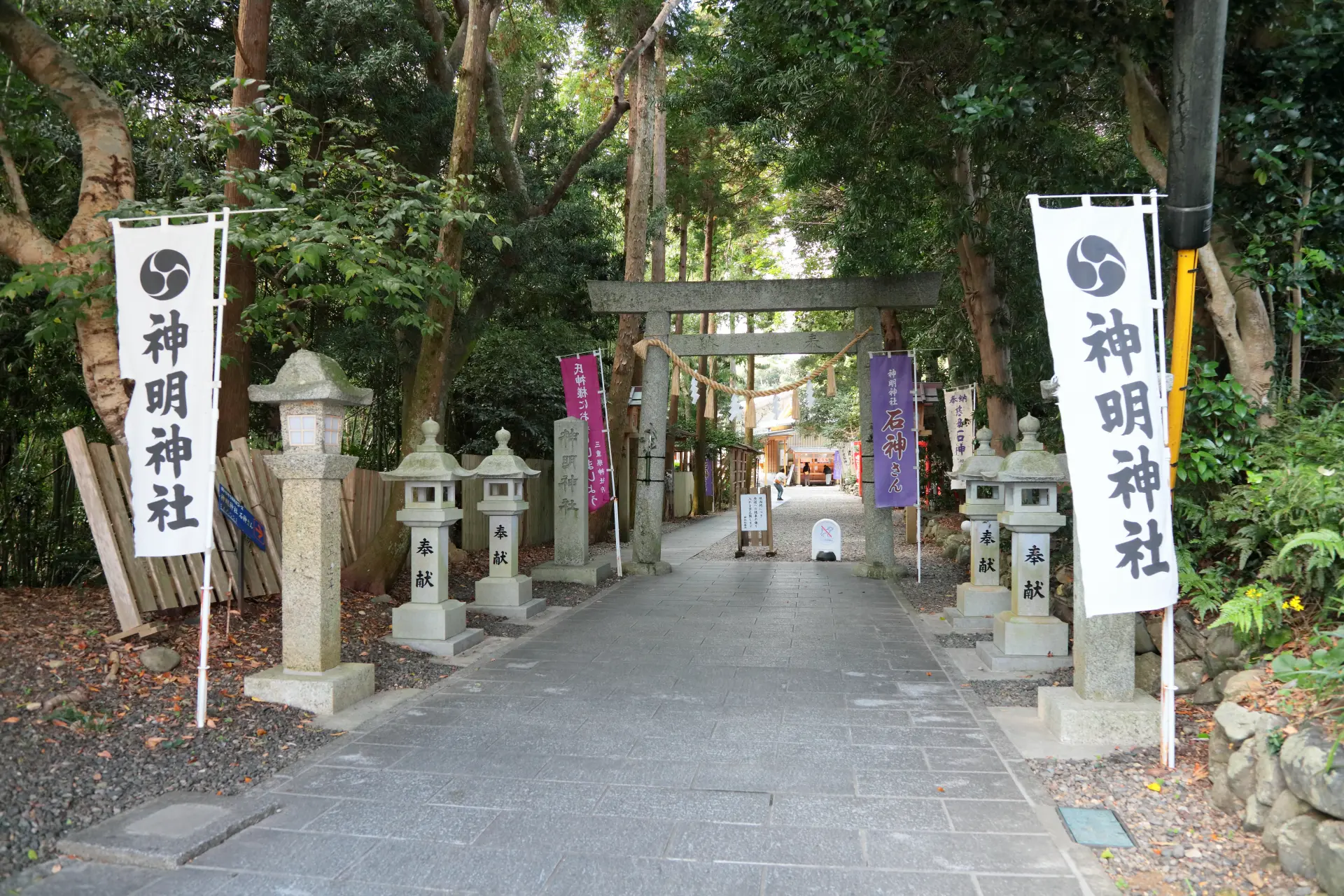
At the entrance to Shinmei Shrine, the stone lanterns line the path, guiding visitors toward the torii gate. Passing through the torii, we make our way into the sacred shrine grounds.
A five-minute uphill walk along the path beside the Osatsu Ama Culture Museum leads us to a stone torii gate, marking the entrance to Shinmei Shrine. Within its sacred grounds lies Ishigami-san, a small shrine that has long been cherished by the local community.
Ishigami-san is believed to grant one wish to women. Originally, it was a place where Ama divers prayed for bountiful catches and safety at sea. In recent years, it has gained fame as a spiritual power spot, attracting visitors from all over Japan. The number of pilgrims returning for thanksgiving visits after having their wishes granted continues to grow.
Today, we see many fellow visitors paying their respects. Following proper etiquette, we first offer prayers at the main hall of Shinmei Shrine before proceeding to Ishigami-san. With heartfelt sincerity, we make our wishes. Hopefully, we too will have the chance to return one day to express our gratitude for a wish fulfilled.
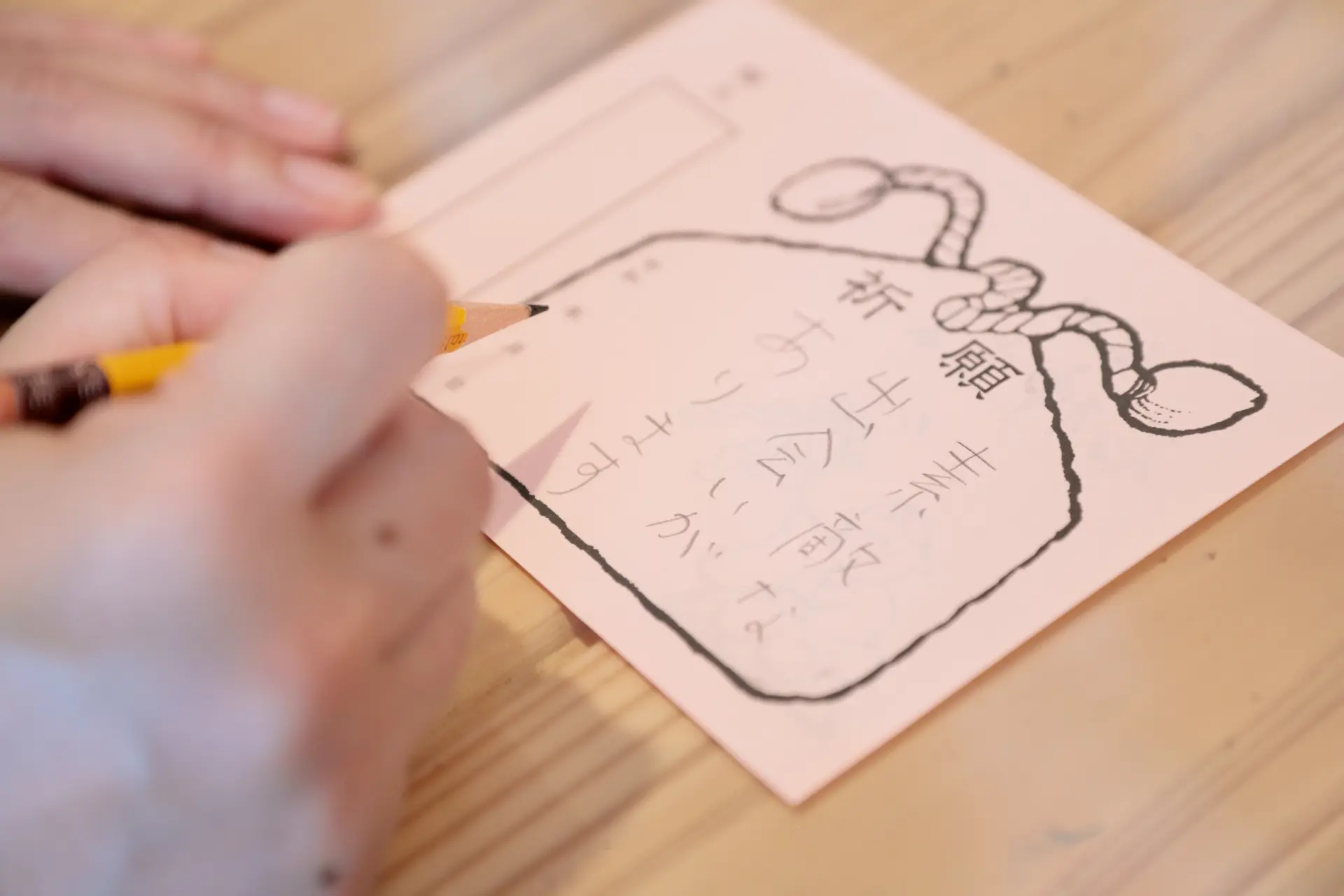
With heartfelt sincerity, we write down one wish, as only a single wish can be made at Ishigami-san.
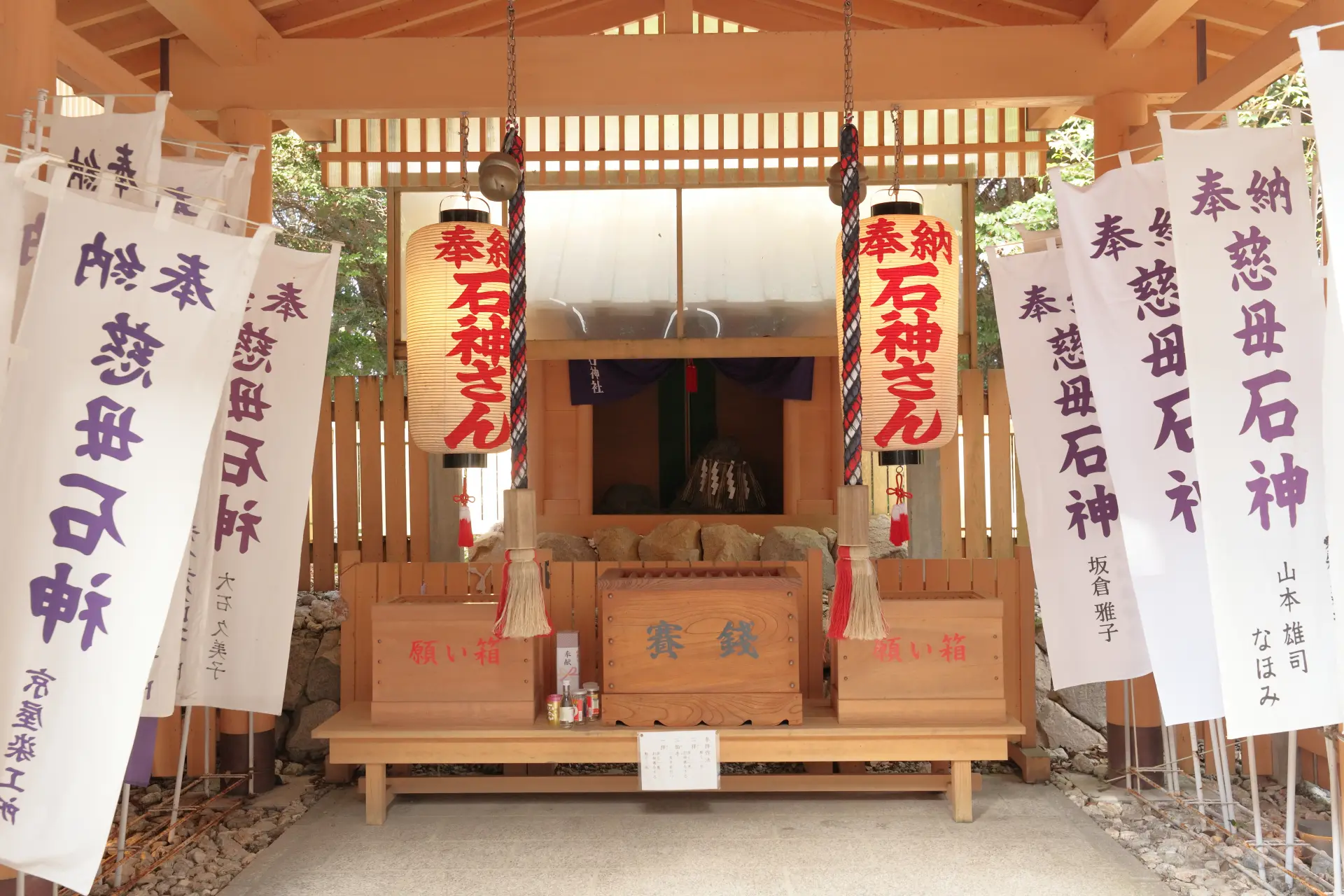
Once written, the wish paper is placed into one of the wish boxes on either the left or right, following the shrine's tradition.
Basic Information
- Name in Japanese
- 石神さん(神明神社)
- Postal Code
- 517-0032
- Address
- 1385 Osatsucho, Toba City, Mie
- Telephone
- 0599-33-6873
- Access
-
By car: Approximately 25 minutes from Kintetsu/JR Toba Station.
By bus: Take the Kamome Bus Kunizaki Line from Kintetsu/JR Toba Station for about 40 minutes, get off at "Osatsu (Ishigami-san Mae)" bus stop, then walk about 10 minutes. - Business Hours
-
Amulet distribution: 8:30am - 4:30pm
Goshuin (seal stamp) reception: Until 4:15pm - Admission
- Free
- Closed
- Open every day
- URL
- URL
6:00pm – Check-in at "Shima Kanko Hotel," Venue of the G7 Ise-Shima Summit
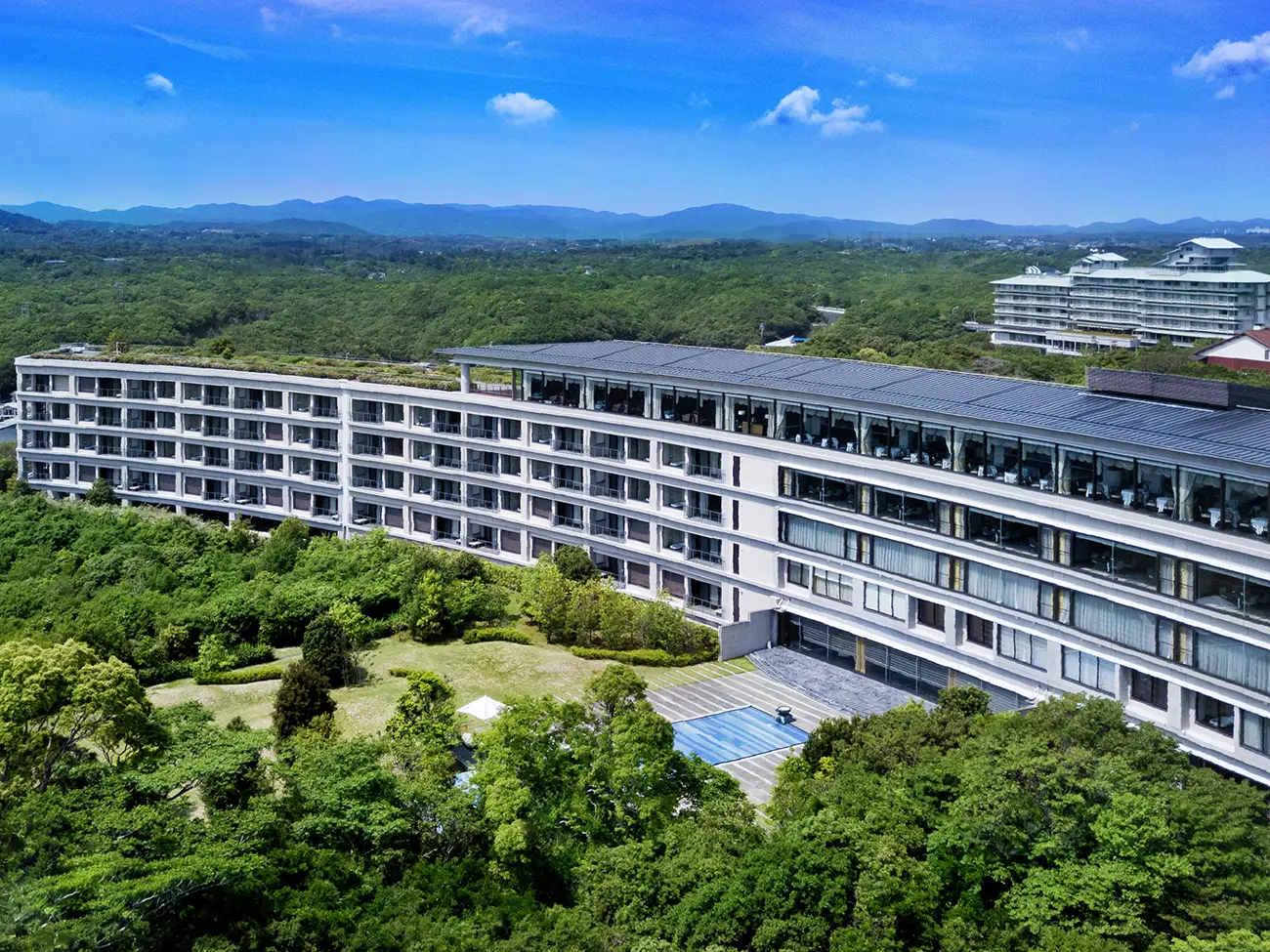
Located within Ise-Shima National Park, the hotel offers breathtaking panoramic views from its rooms, allowing guests to fully appreciate the magnificent natural surroundings.
After visiting the shrine, we head back to the Osatsu Ama Culture Museum and board the 4:39pm Kamome Bus. We get off at the Matsuo Ekiguchi bus stop and transfer to the Kintetsu train at Matsuo Station, taking the Kashikojima-bound train for 26 minutes until we reach the final stop, Kashikojima Station. From there, the complimentary shuttle bus provides a convenient transfer to our accommodation, Shima Kanko Hotel.
Opened as Japan’s first full-scale Western-style resort hotel after World War II, Shima Kanko Hotel carries a legacy of prestige and excellence. It has hosted esteemed guests, including Emperor Showa, who admired the view from the hotel's garden, and served as the venue for the G7 Ise-Shima Summit, welcoming world leaders.
The hotel features two main accommodation wings: "The Classic", completed in 1969, and "The Bay Suites", opened in 2008. Tonight, we will be staying at The Bay Suites, offering an elegant and serene retreat amidst the stunning natural beauty of Ise-Shima.
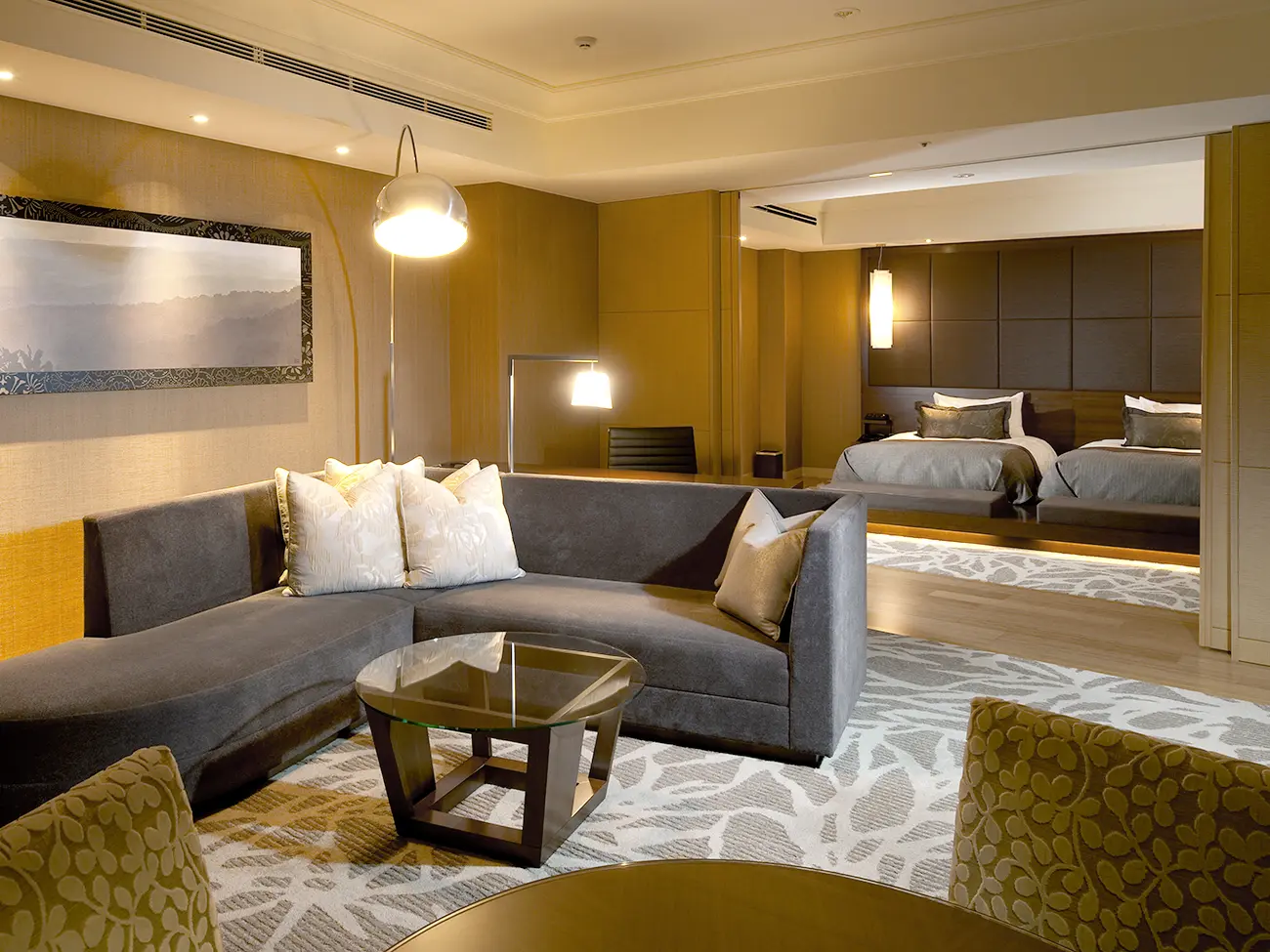
The guest rooms at The Bay Suites are all 100 square meters in size, offering a spacious and luxurious retreat. With ample room to relax, guests can fully unwind in comfort and elegance.
Each guest room at The Bay Suites comes with a private balcony, offering breathtaking views of the lush forest and vast ocean. The stunning scenery outside the window is so mesmerizing that we find ourselves gazing in awe for a while.
As beautiful as the room is, the hotel itself has many more attractions to explore. Unable to resist, we take a leisurely stroll around the premises, discovering stories and historical connections to some of Japan’s most renowned literary figures and artists. The museum-like atmosphere of the hotel, with its rich cultural exhibits, makes for a truly enchanting experience.
Beyond its elegant interiors, the dining options here are equally impressive. The hotel boasts four different restaurants, offering French cuisine, Japanese fine dining, and teppanyaki. Given the theme of this trip—Ama culture—we decide to indulge in fresh sushi and sashimi at the Japanese restaurant Hamayu, located on the fourth floor of the hotel.
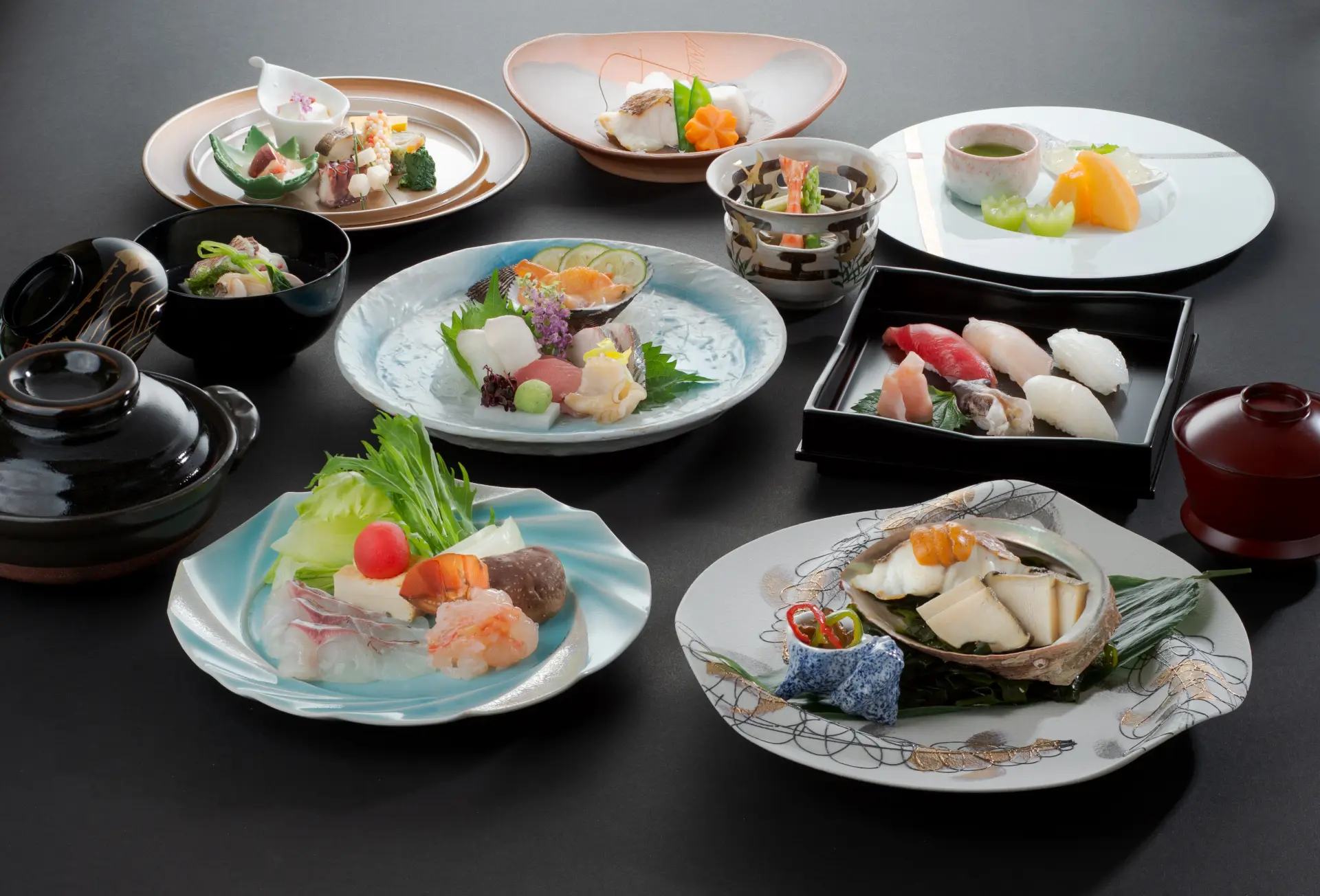
An example of a dinner at Hamayu, the hotel's Japanese restaurant, showcases a carefully curated selection of local ingredients.
Basic Information
- Name in Japanese
- 志摩観光ホテル ザ ベイスイート
- Postal Code
- 517-0032
- Address
- 731 Agochoshinmei, Shima City, Mie (Kashiko Island)
- Telephone
- 0599-43-1211
- Access
- Approx. 2 minutes by complimentary shuttle bus from Kintetsu Kashikojima Station.
- Hours
- Check-in 3:00pm / Check-out by 12:00pm
- Accommodation Fee
- From 43,200yen per person (based on double occupancy, including breakfast)
- Closed
- Open every day
- URL
- URL
DAY2
9:30pm – Board the "Kashikojima Espana Cruise" for a Relaxing Tour of Ago Bay
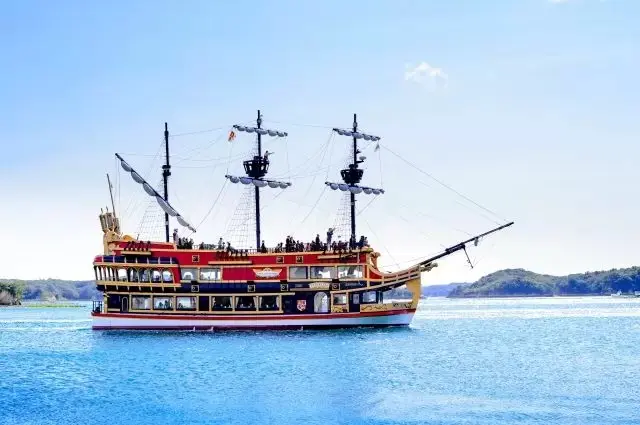
The ship's name, "Esperanza," means "hope" in Spanish.
We start the morning a little early, checking out of the hotel at 9:00am and heading to the Kashikojima Espana Cruise terminal, which is about a 15-minute walk from the hotel.
Now, it's time to set sail on a 50-minute cruise through the Ise-Shima waters that have nurtured the Ama culture! Boarding a sightseeing vessel inspired by a Carrack ship from Spain’s Age of Exploration, we glide across Ago Bay, eventually returning to our departure point.
With the ocean breeze on our skin and the scent of the sea filling the air, we take in the deep blue waters and the countless islands that dot the bay from every direction. The perspective from the ship offers a completely different and breathtaking experience compared to viewing the bay from land.
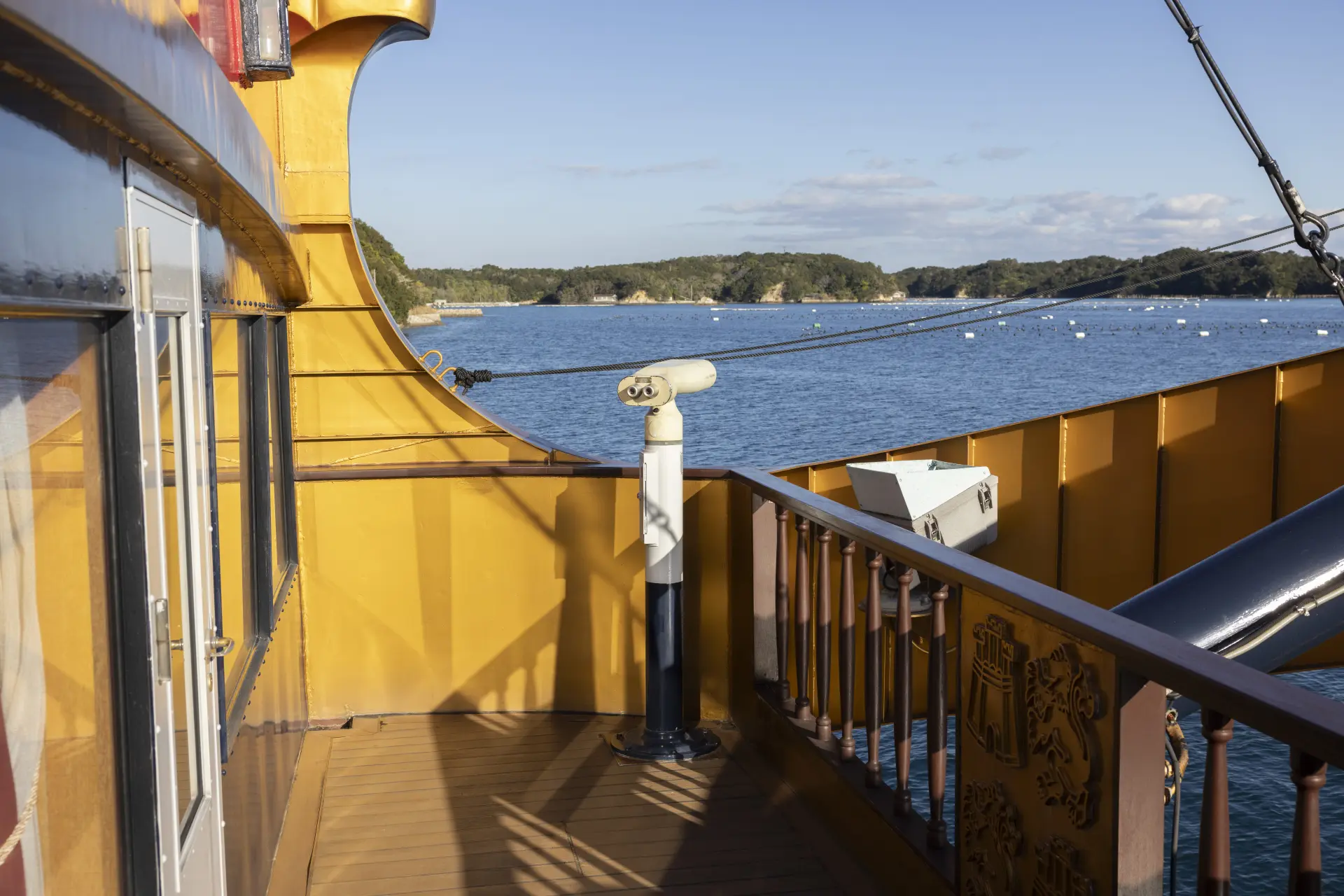
The dedicated observation deck is equipped with telescopes, allowing passengers to get a closer view of the stunning scenery.

As the ship gracefully glides through the waters, we pass by numerous islands and floating pearl rafts, offering a serene and picturesque view of Ago Bay.
Basic Information
- Name in Japanese
- 賢島エスパーニャクルーズ(あご湾遊覧)
- URL
- URL
10:40am – Explore Pearl Accessories at "Iwajin Pearl Store" and Enjoy a Delightful Lunch at Its Café
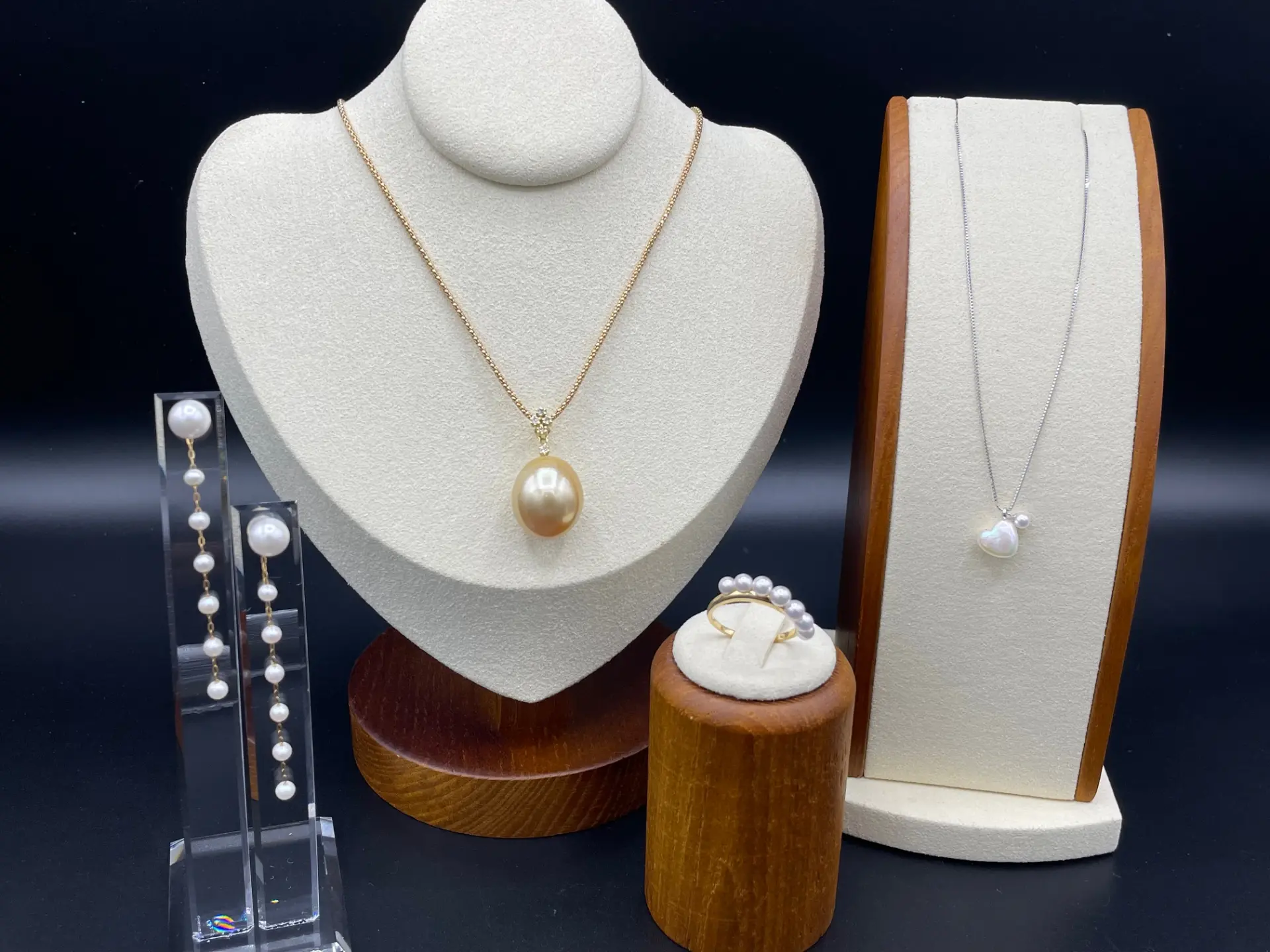
Elegant accessories adorned with large, lustrous pearls that radiate a beautiful sheen.
Heading to Iwajin Pearl Store, located right in front of Kashikojima Station, we arrive just five minutes on foot after disembarking from the cruise.
Founded in 1926, Iwajin Pearl Store specializes in high-quality Akoya pearls, carefully crafted into timeless and elegant accessories that transcend passing trends. The large pearls on display are truly breathtaking, making them a must-have for formal occasions.
As we admire the exquisite collection and enjoy a bit of shopping, we wait for the café to open.
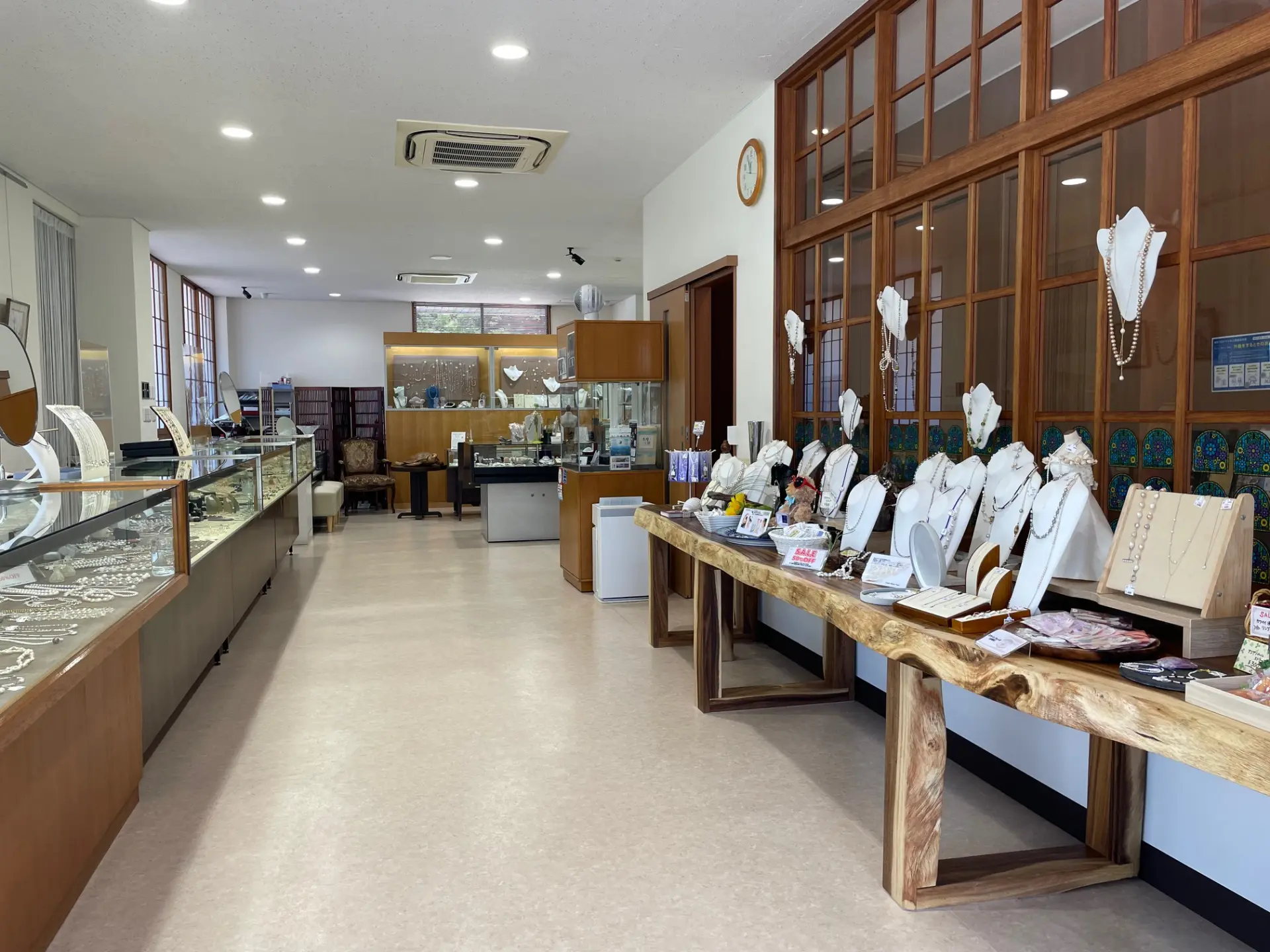
The store interior is adorned with high-quality pearl accessories, each radiating elegance and sophistication.
In 1981, a corner of the store was transformed into Iwajin Café, offering high-level Mediterranean cuisine crafted by a chef who trained in Monaco.
The highlight here is the Iwajin-style Bouillabaisse Lunch, a signature dish that won the 2nd Shima S★1 Grand Prix in 2017 by an overwhelming margin.
This dish is not only delicious on its own, but also offers various ways to enjoy it—dipping bread into the rich broth, topping it with ratatouille, or mixing the ratatouille into the soup for a minestrone-like twist. With so many ways to savor it, I found myself finishing the dish in no time.
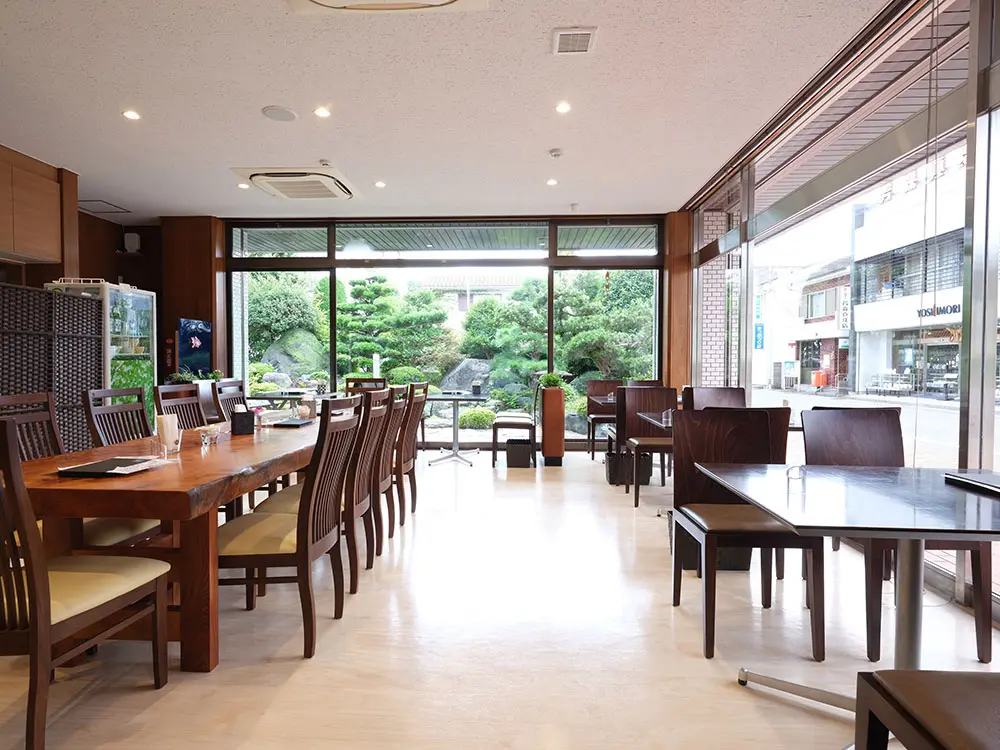
The café, integrated within the store, offers a serene atmosphere with a beautiful Japanese garden visible through the windows, enhancing the dining experience.
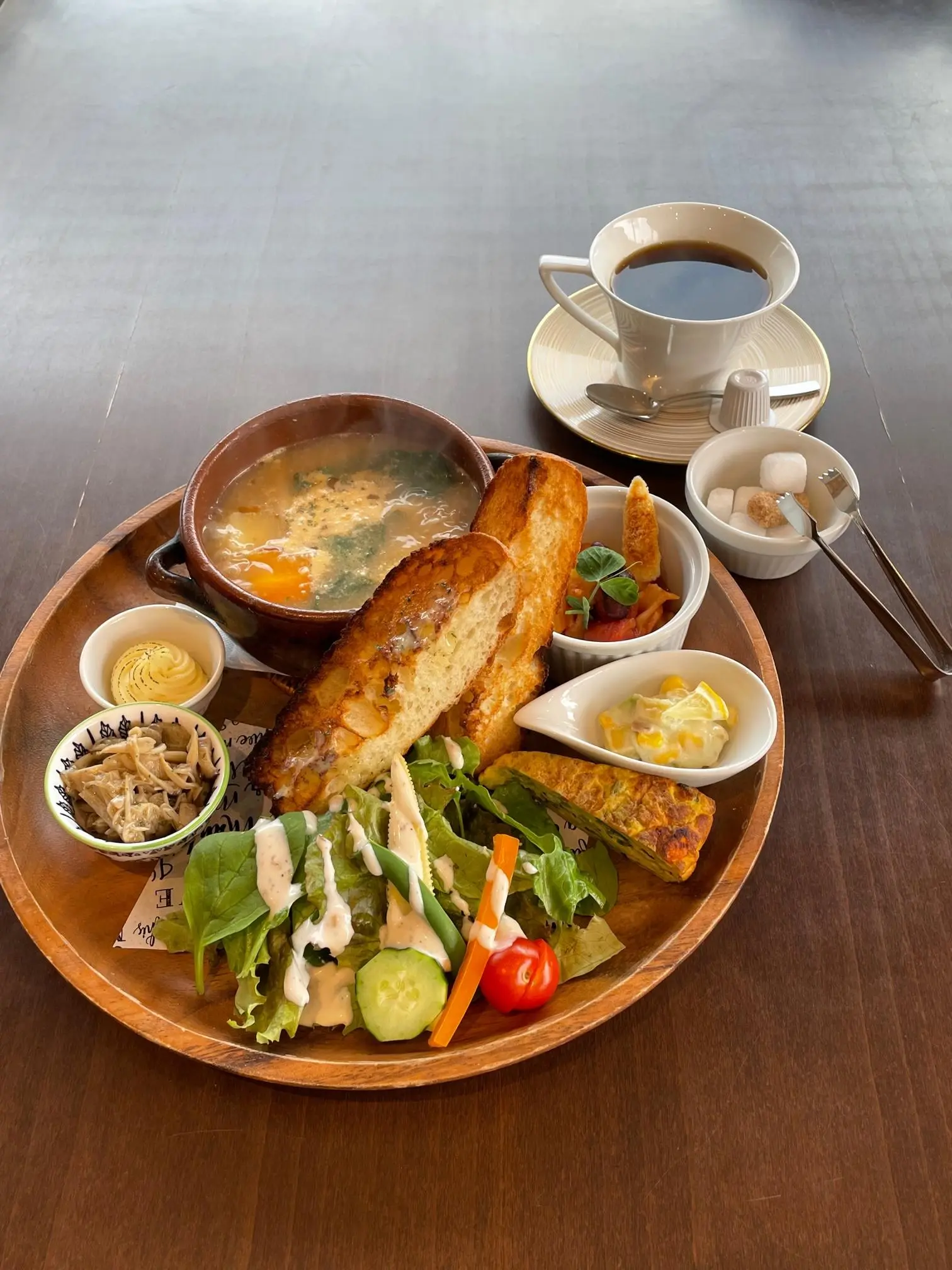
The Iwajin-style Bouillabaisse Lunch is beautifully presented on a single plate, featuring bread and a rich, flavorful soup, creating a delightful and satisfying meal.
Basic Information
- Name in Japanese
- イワジン真珠店/イワジン喫茶室
- Postal Code
- 517-0502
- Address
- 733-8 Agochoshinmei, Shima City, Mie (Kashiko Island)
- Telephone
- 0599-43-1018
- Access
- About a 1-minute walk from Kintetsu Kashikojima Station
- Business Hours
-
Dining Hours: 11:00am – 1:30pm (Last Order)
Café Hours: 11:00am – around 3:00pm (Last Order)
※ Operating hours and holidays are subject to change; please inquire in advance. - Price
- Iwajin-style Bouillabaisse Lunch ¥1,800 (includes a drink)
- Closed
- Wednesdays (additional temporary closures may apply)
- URL
- URL
2:00pm – Try Pearl Extraction at "Pearl Miki"
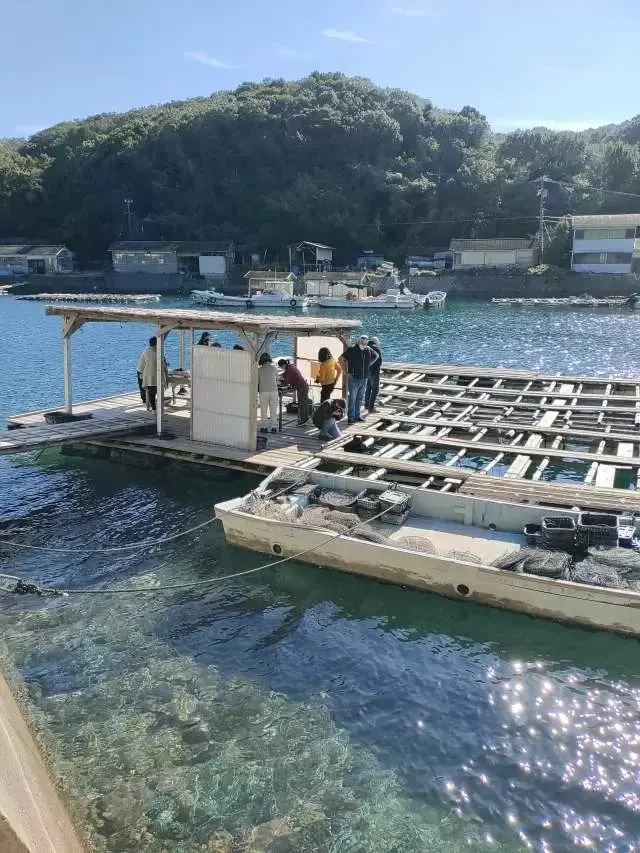
Observing the pearl oyster nets on the farming raft.
After arriving at Ugata Station by Kintetsu train, we transferred to the Mie Kotsu bus bound for Goza Port, reaching the final stop, "Goza Port," in about 60 minutes. From there, it was a 15-minute walk to Pearl Miki.
Ago Bay is where Kokichi Mikimoto, known as the "Pearl King," achieved the world's first success in pearl cultivation. Even today, numerous pearl rafts float on the water. Several factors contributed to the success of pearl farming in this area, including water temperature, the amount of plankton, and tidal currents. Additionally, the presence of ama (female divers) played a crucial role. Without their work in collecting Akoya oysters, pearl farming may never have succeeded.
At Pearl Miki, visitors can learn about the traditional pearl cultivation process while experiencing pearl extraction and accessory-making firsthand.
After registering, we moved to the pearl farm raft, where we carefully selected one Akoya oyster, extracted the pearl inside, polished it to a radiant shine, and finally transformed it into a one-of-a-kind pearl accessory. Holding our custom-made pearl accessories in hand, we were overwhelmed with a sense of wonder and accomplishment. This experience is sure to remain an unforgettable memory.
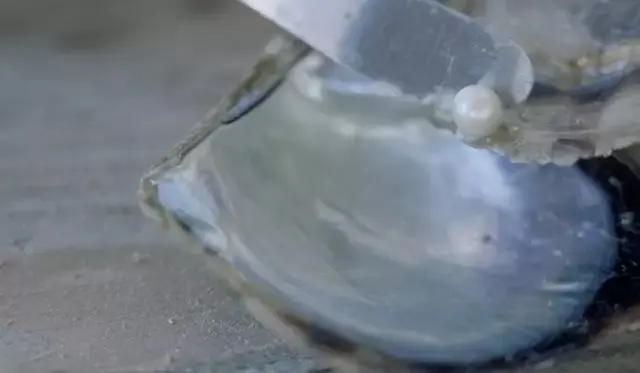
You never know the size, color, or shape of a pearl until you open the shell.
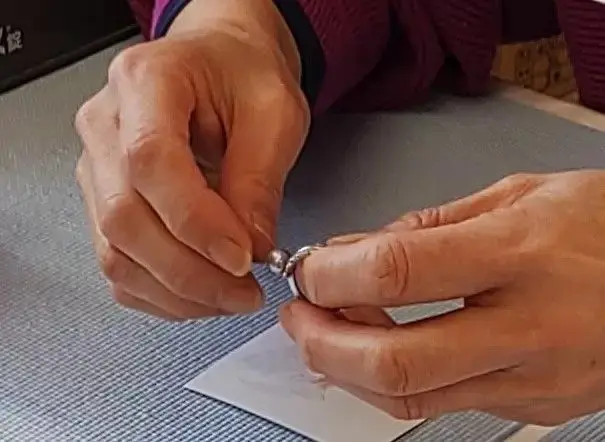
Attach a fitting to the pearl you just extracted and turn it into an accessory!
Basic Information
- Name in Japanese
- パール美樹
- URL
- URL
Wrap-up
On the first day, we visited Osatsu Town in Toba City, and on the second day, we explored the Shima area, including Kashikojima and Goza Port. The intricate coastline creates breathtaking scenery and nurtures a rich marine ecosystem. This journey allowed us to truly experience how the unique "Ama culture" was born from these natural surroundings and climatic conditions. Immerse yourself in the mystical landscapes and the invaluable traditions they have fostered, and feel their essence with both your body and soul.
Check also...
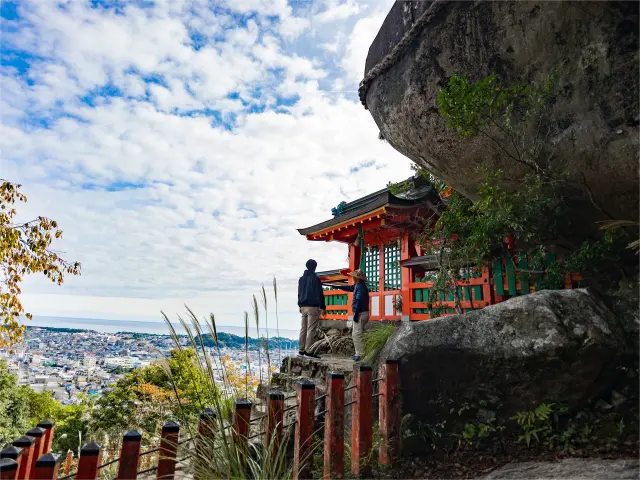
Wakayama: A World Heritage Site and Journey of Deep Mystique at the Kumano Kodo
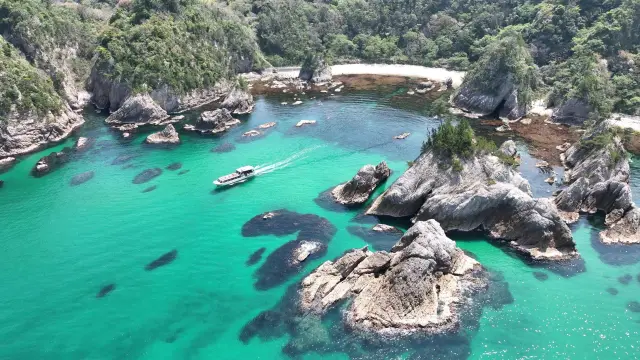
Tottori: A Journey to Unwind in the Majesty of Nature at San’in Kaigan Geopark
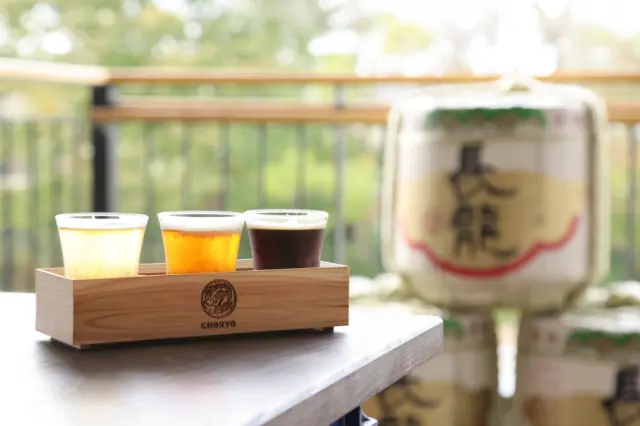
Nara: A Journey Through Its Ancient Fermentation Culture
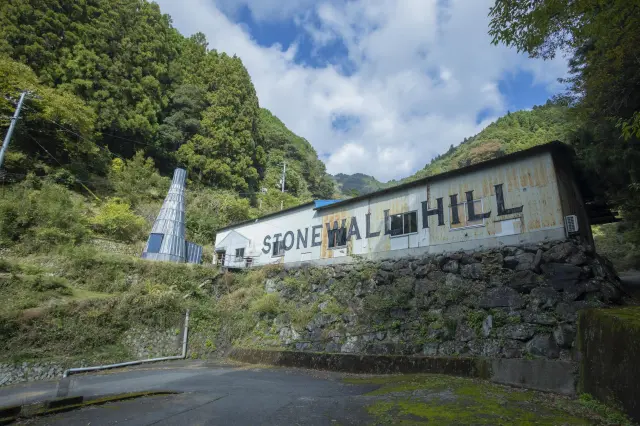
Tokushima: A Journey into Slow Living in the Mountains of Tokushima
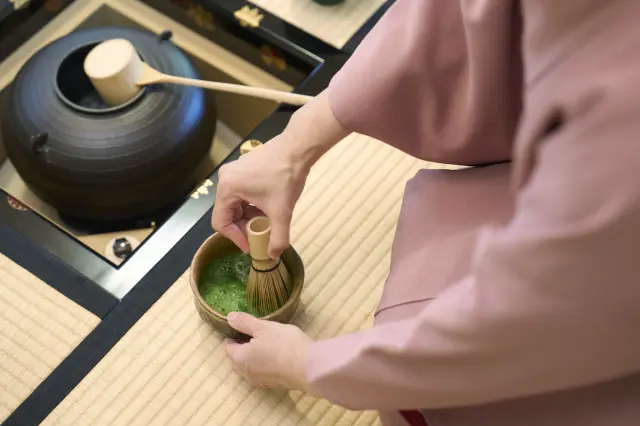
Osaka: A Journey Through Traditional Osaka
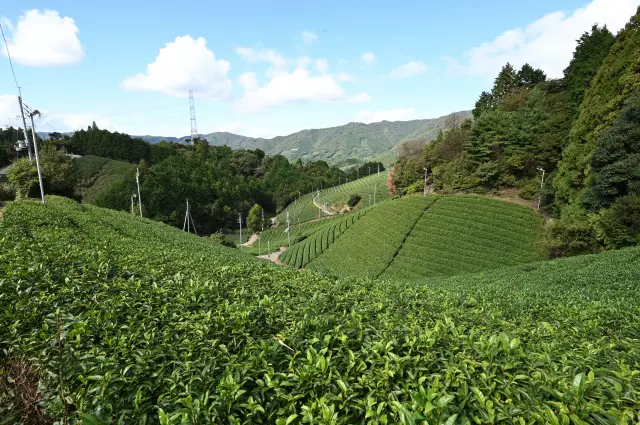
Kyoto: A Journey Through Japanese Gastronomy
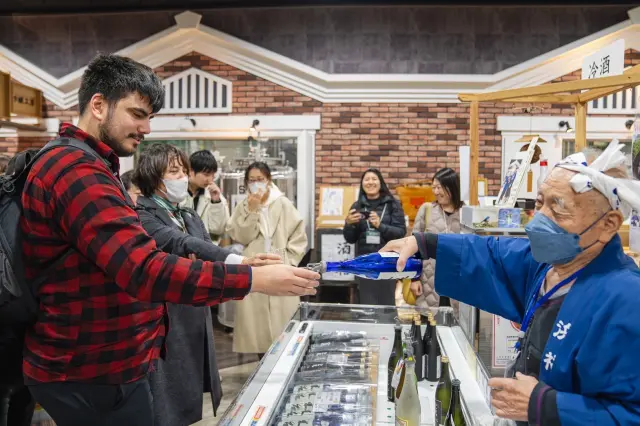
Hyogo: A Journey in Search of Japan’s Finest Sake
